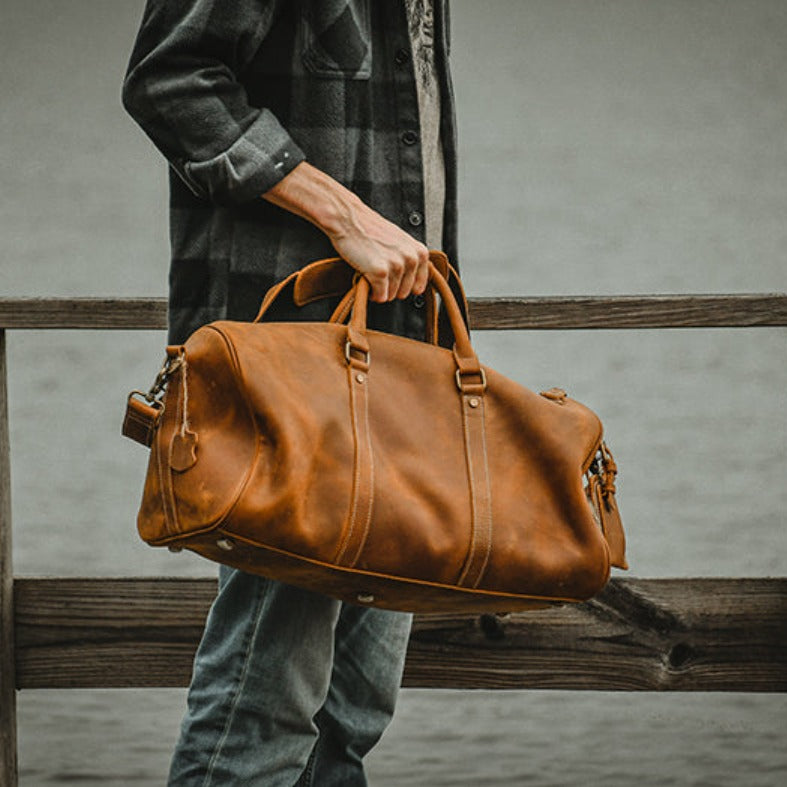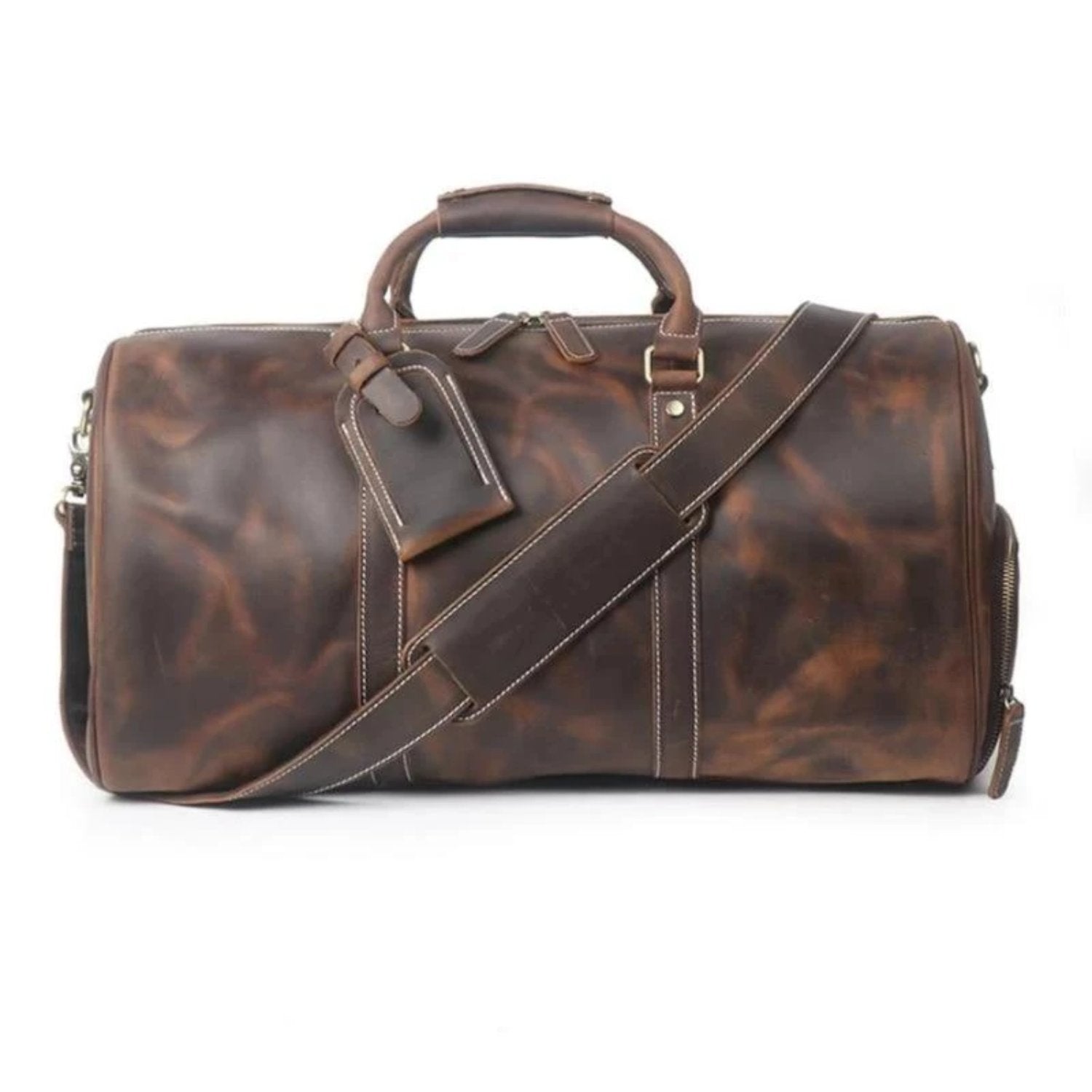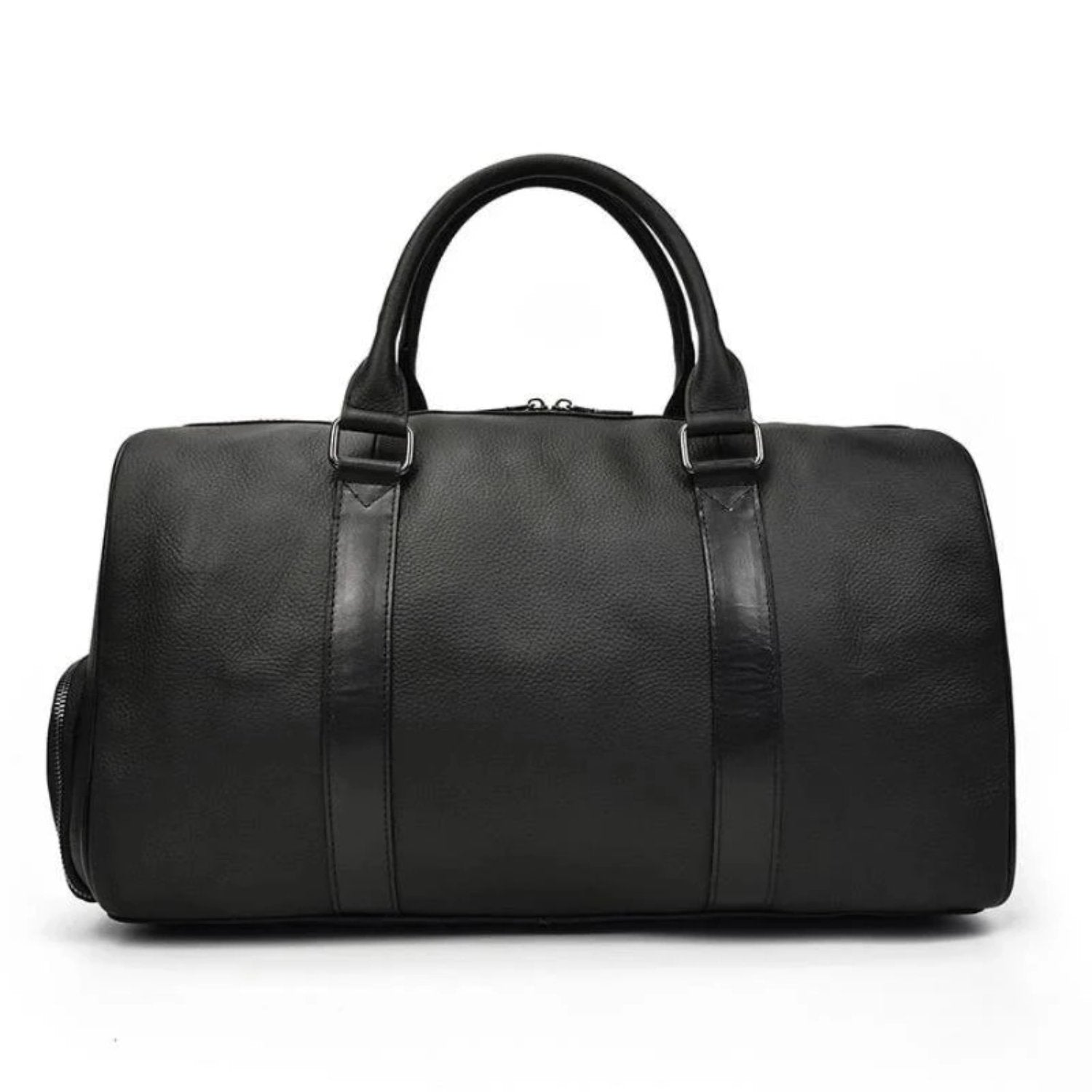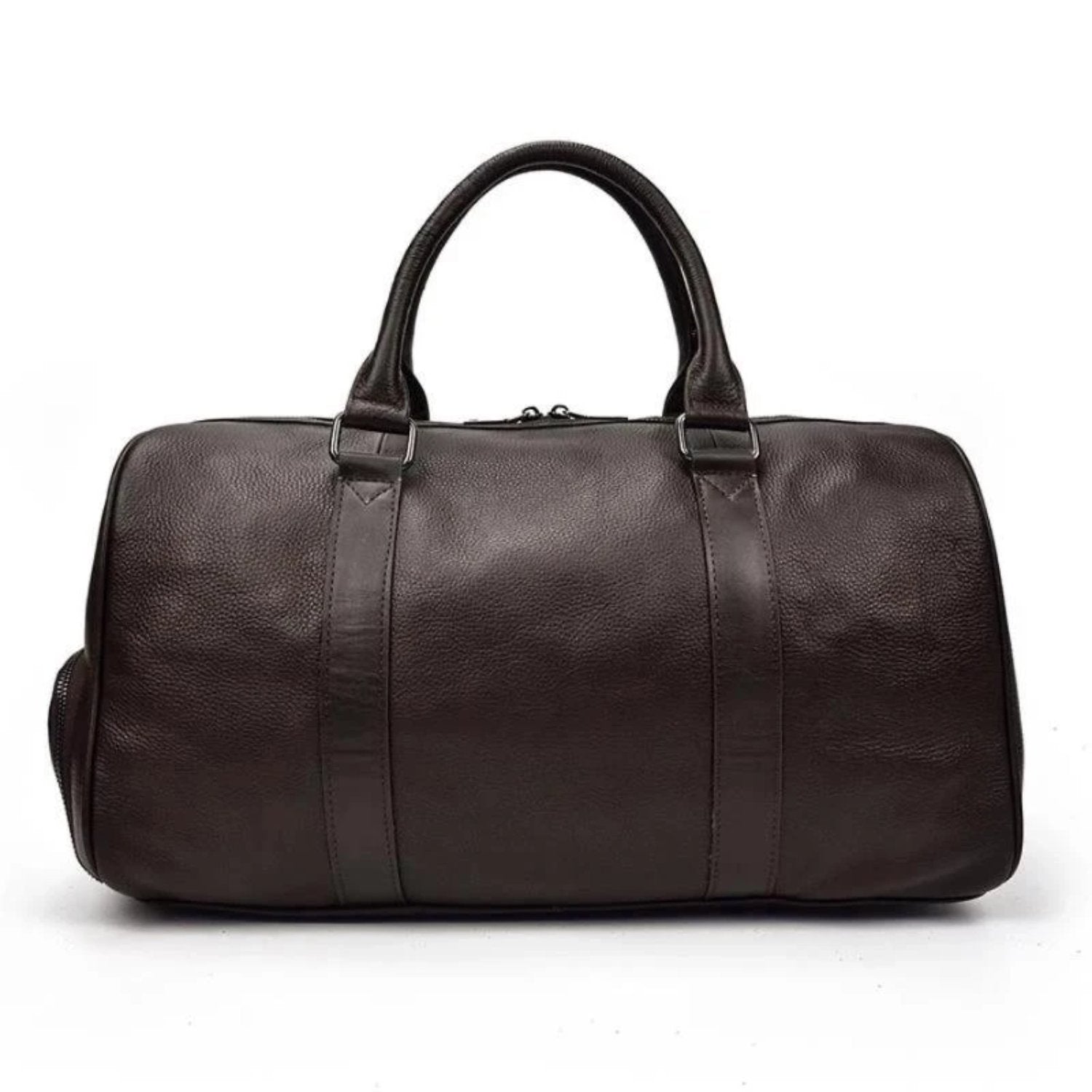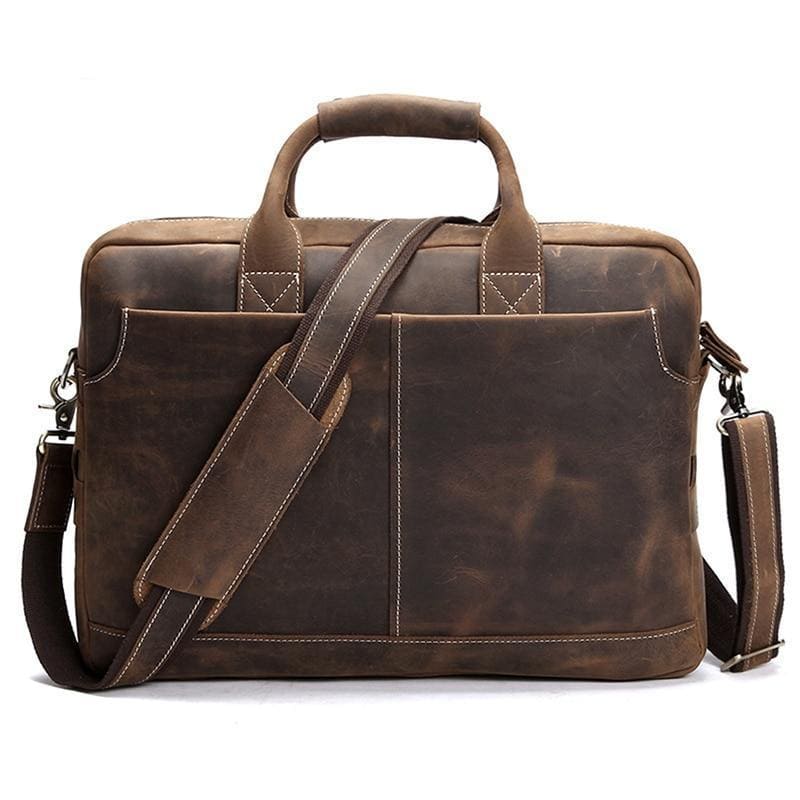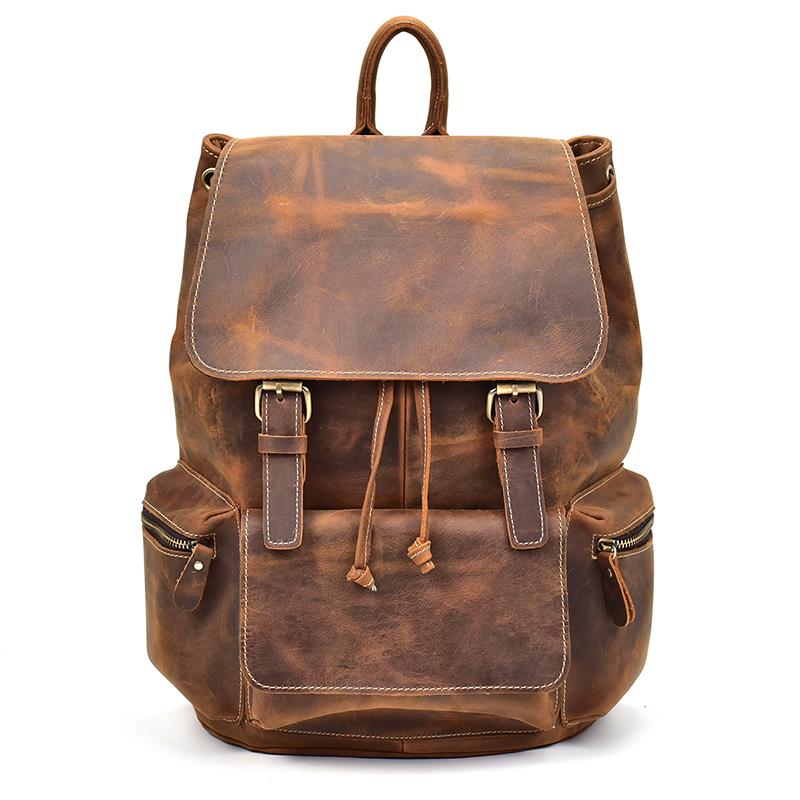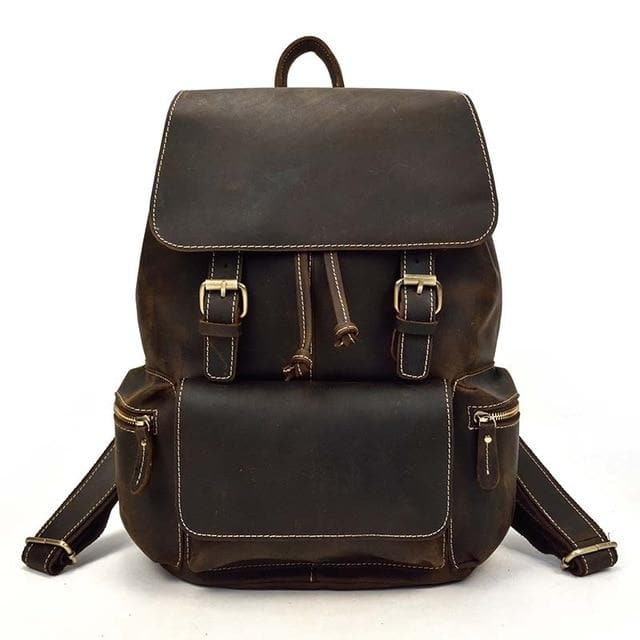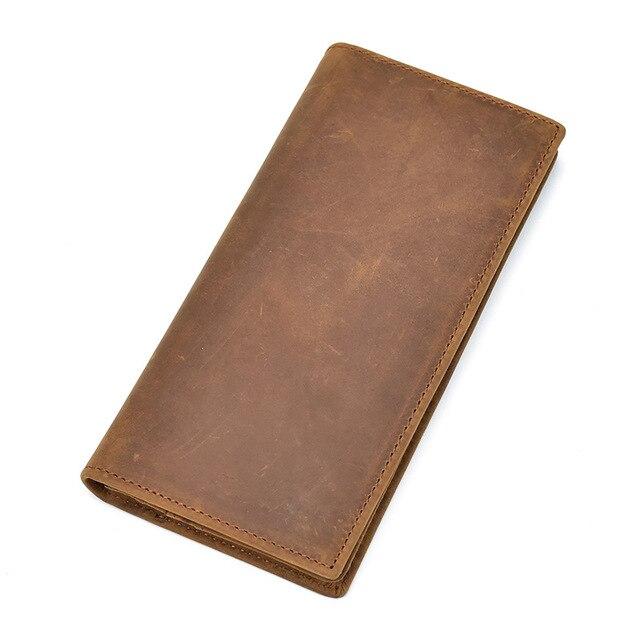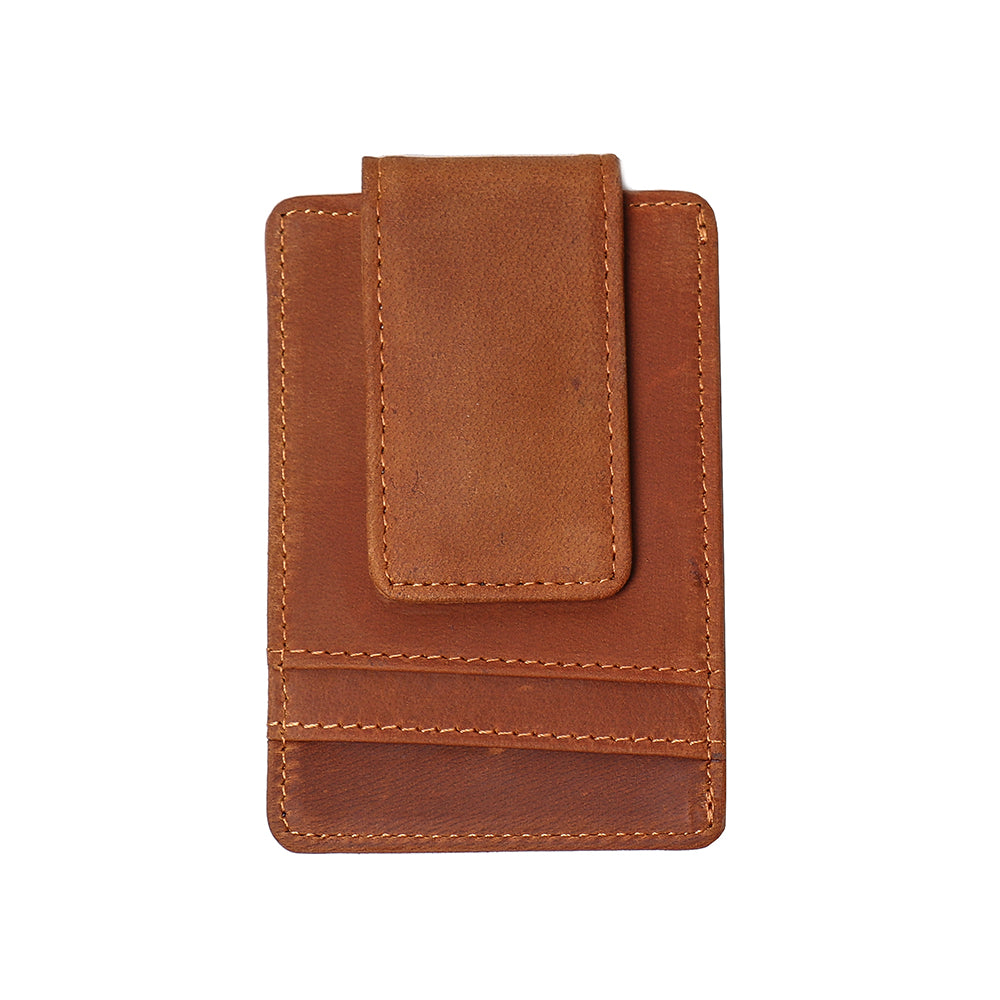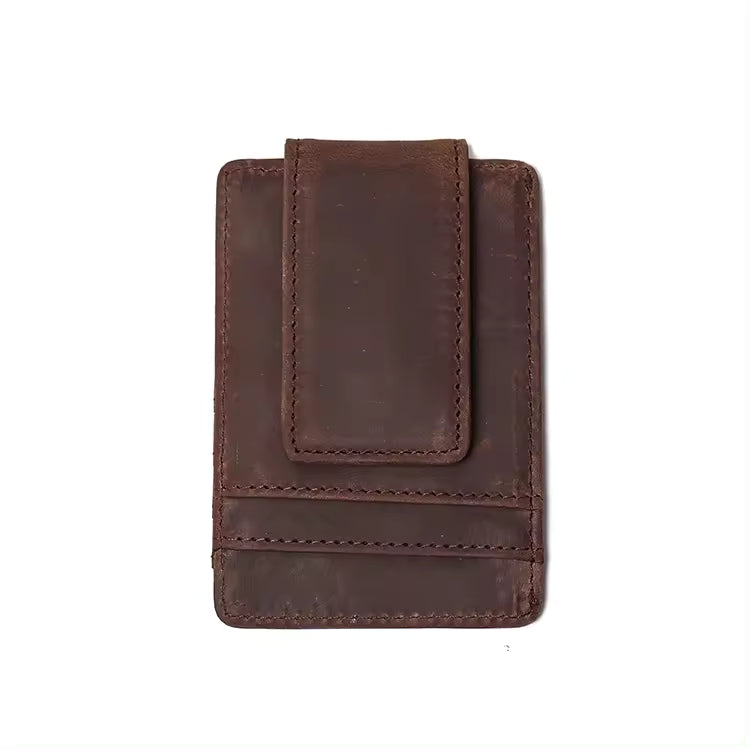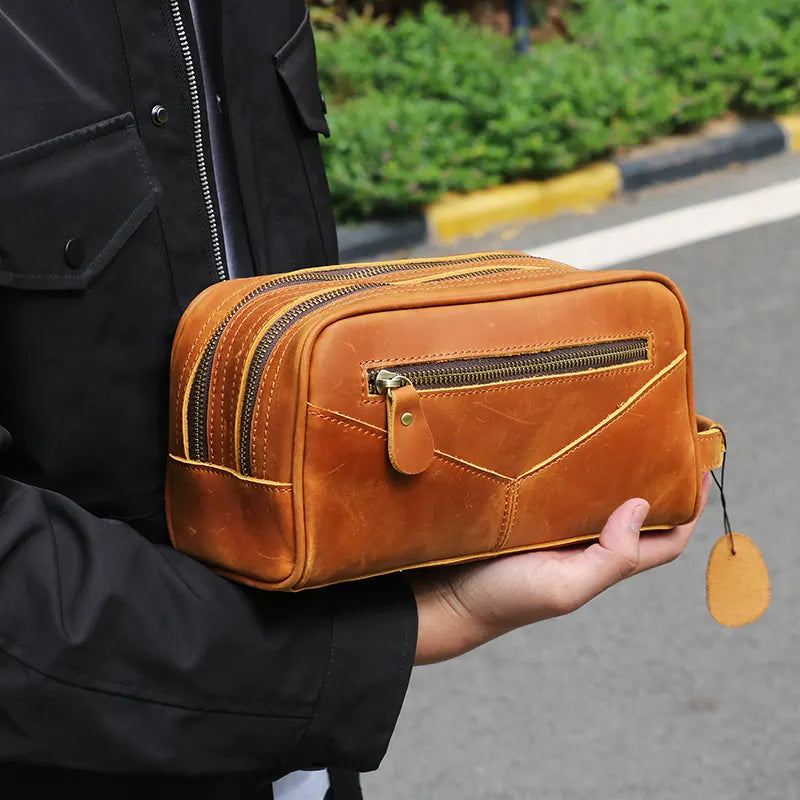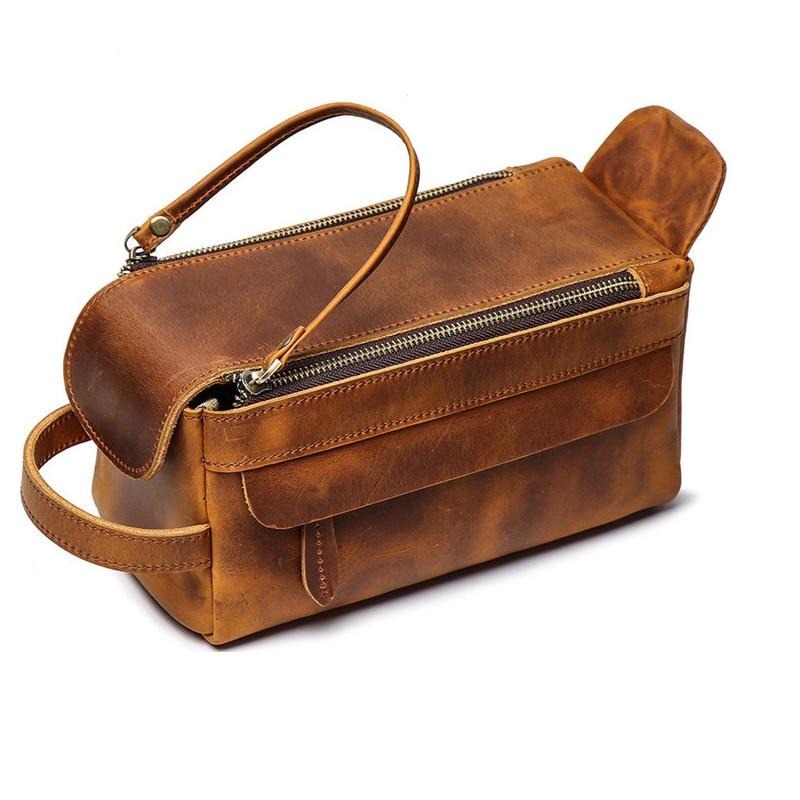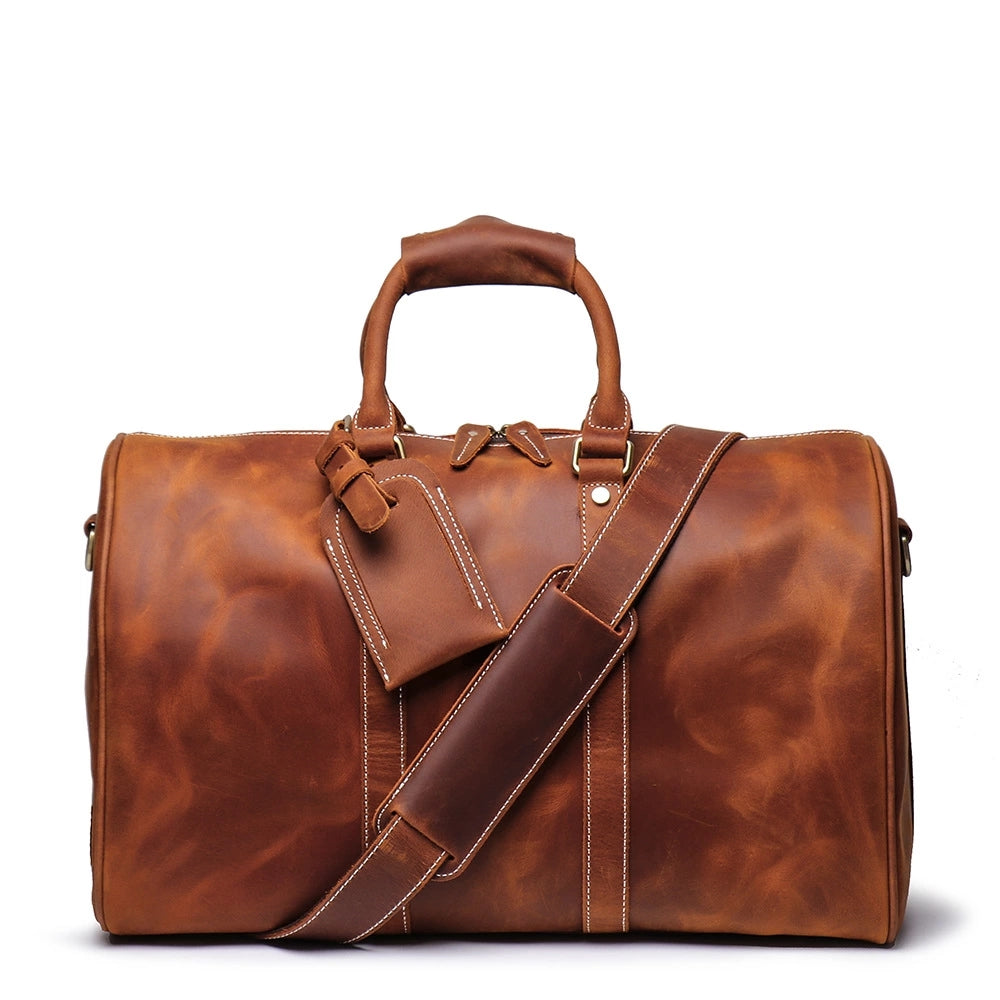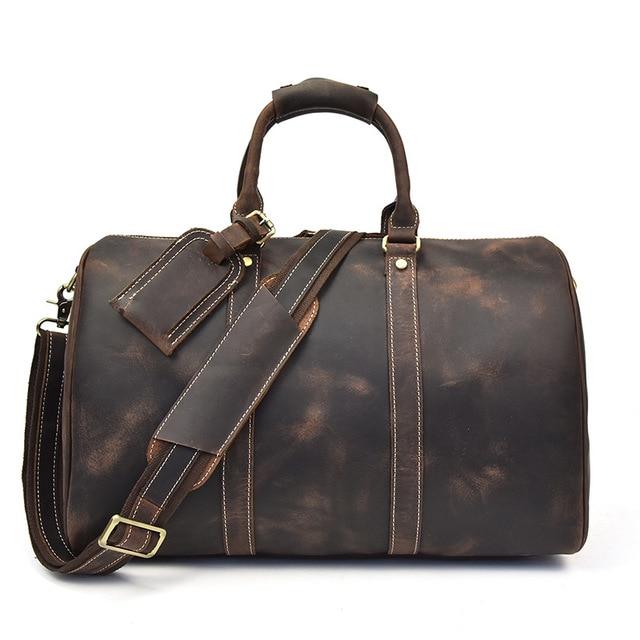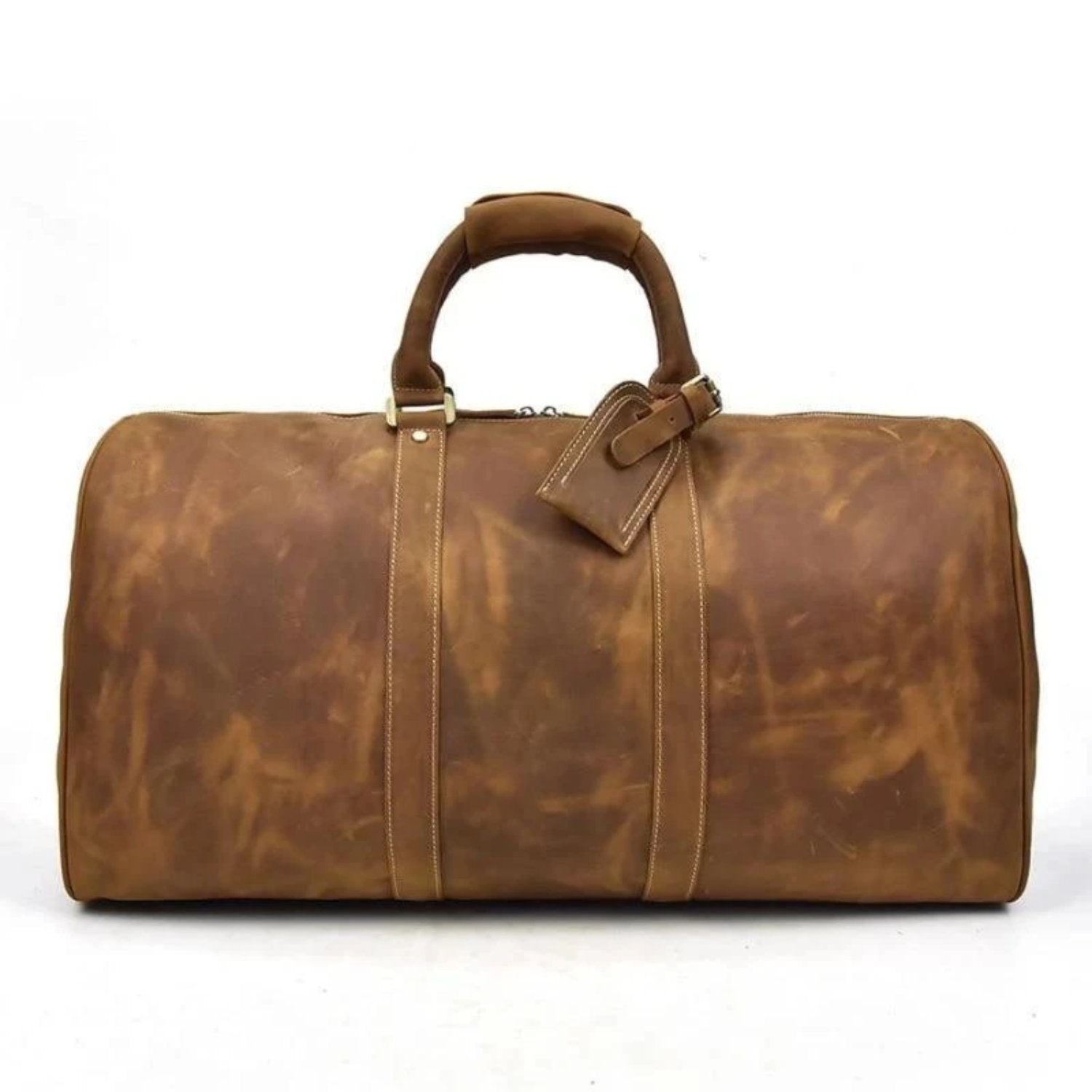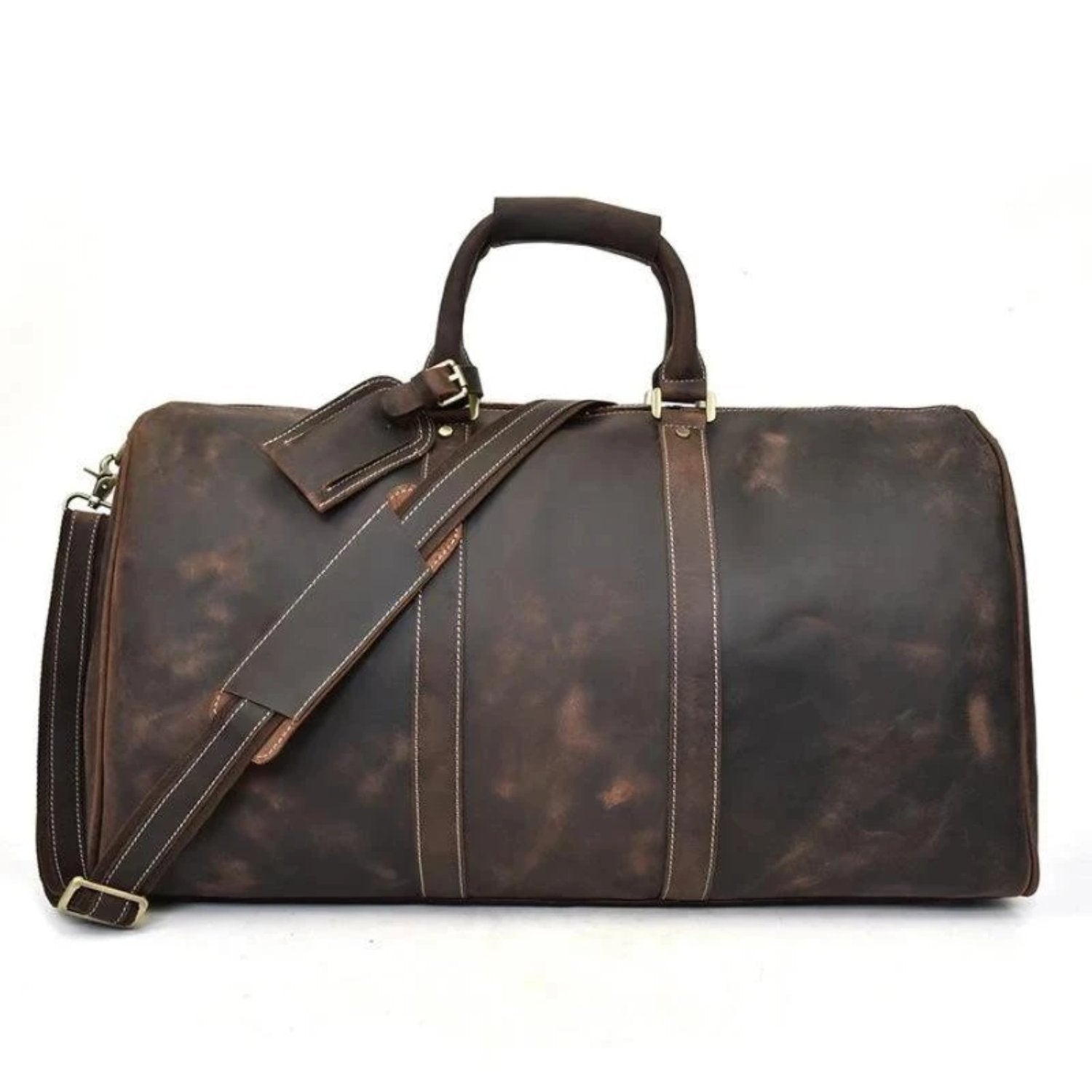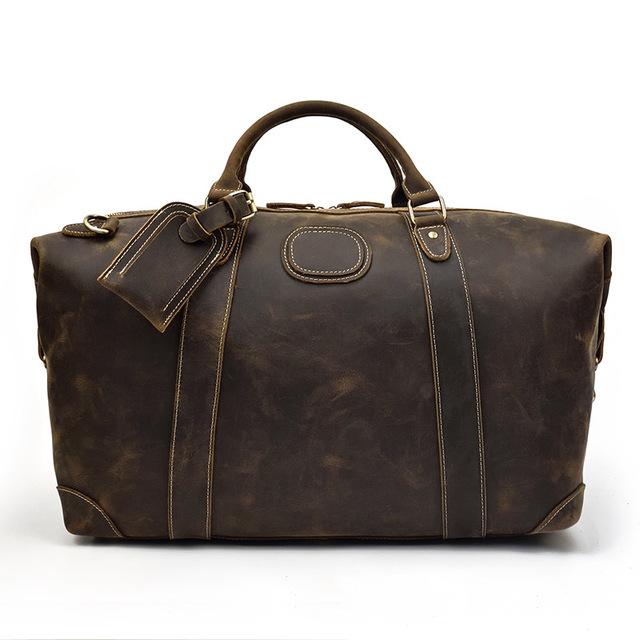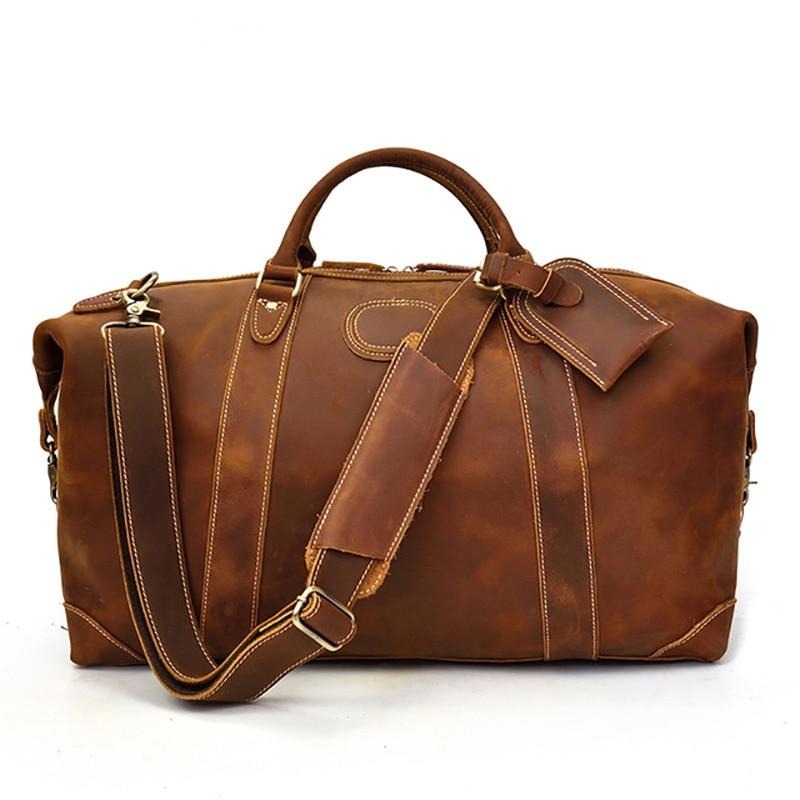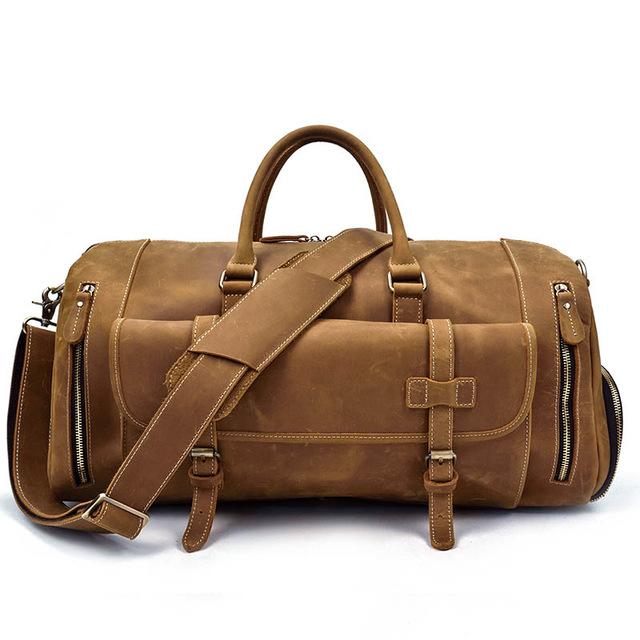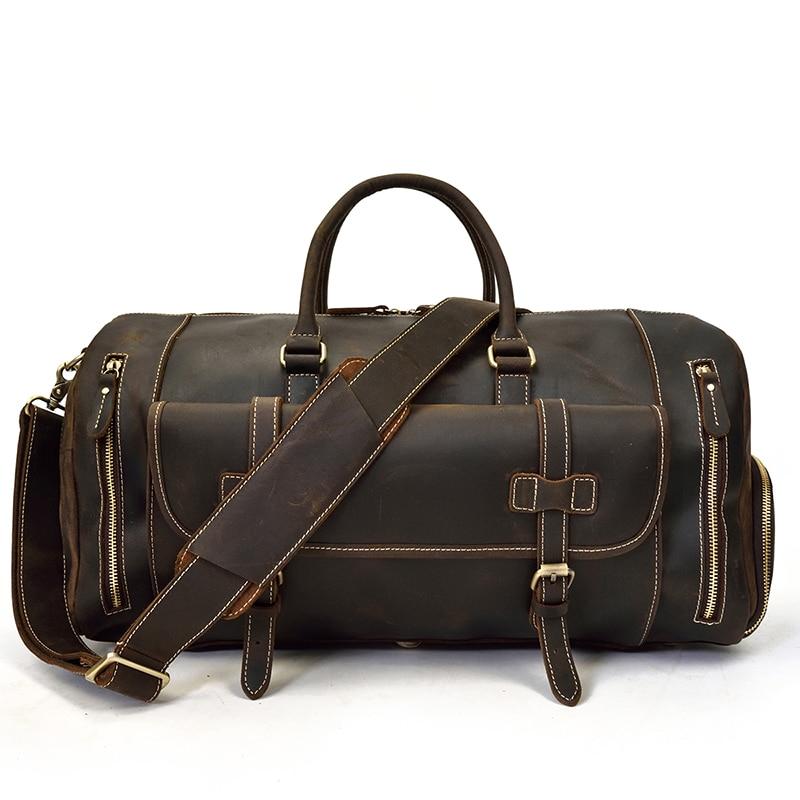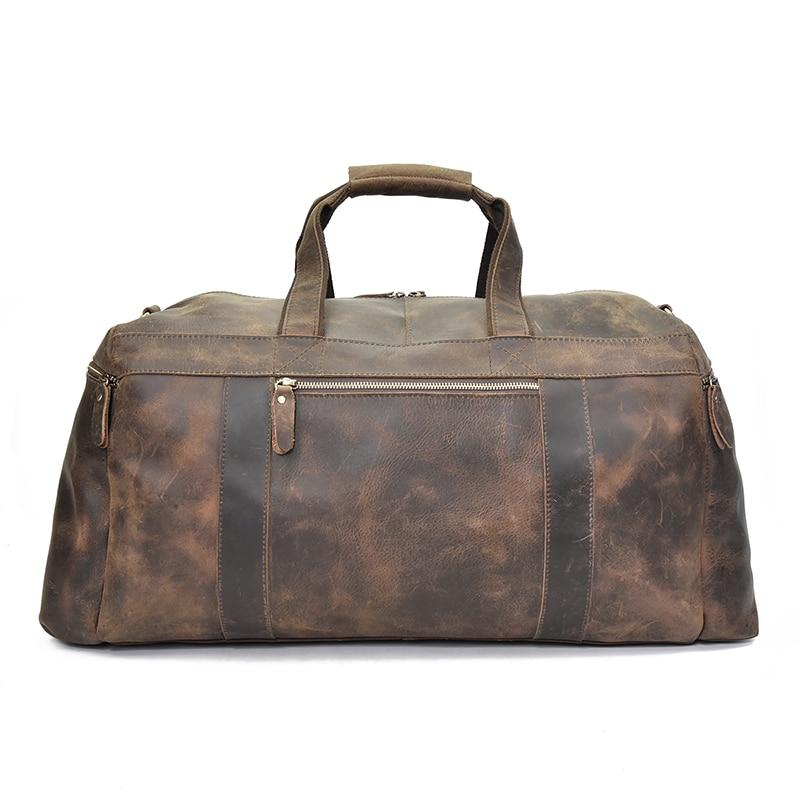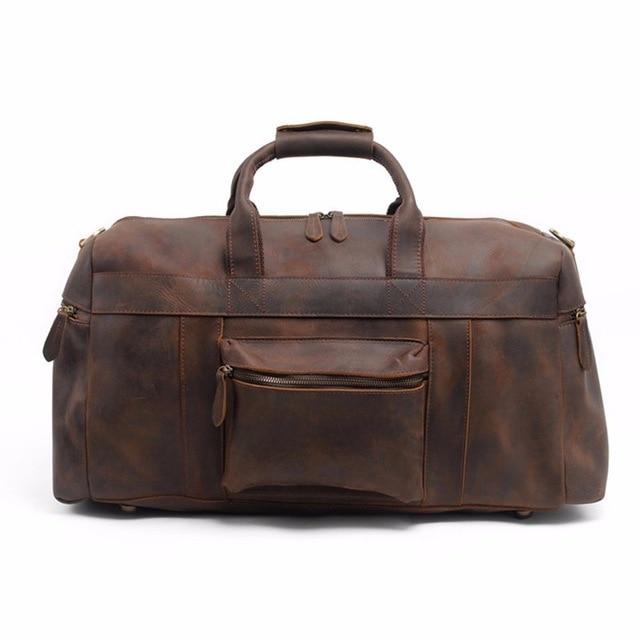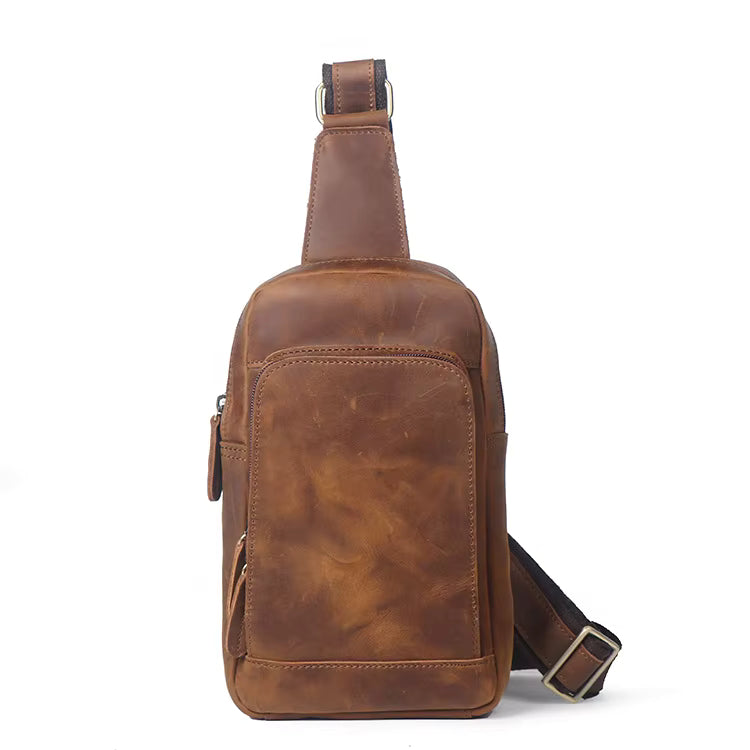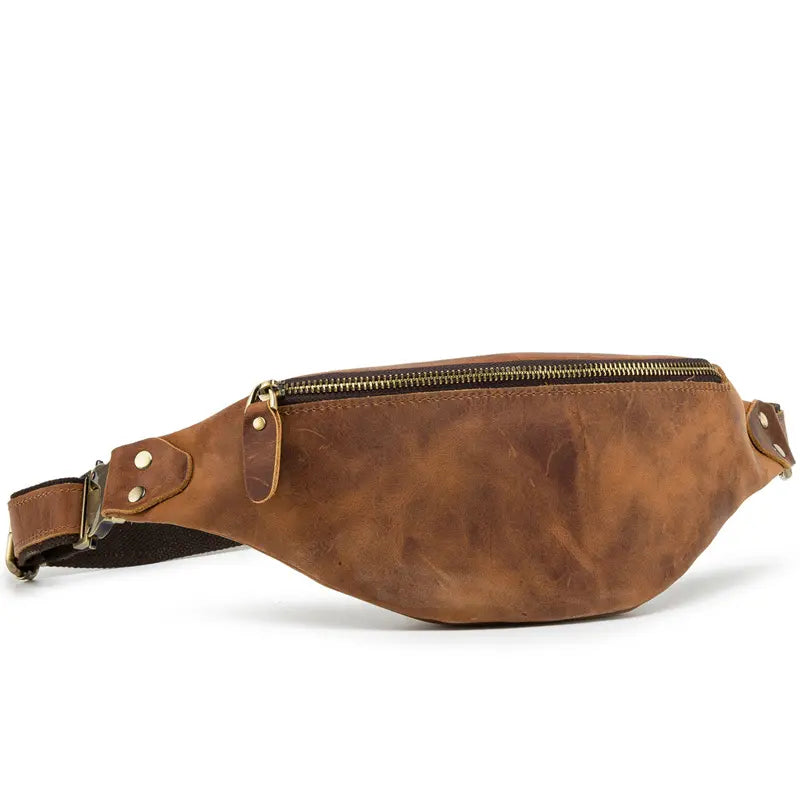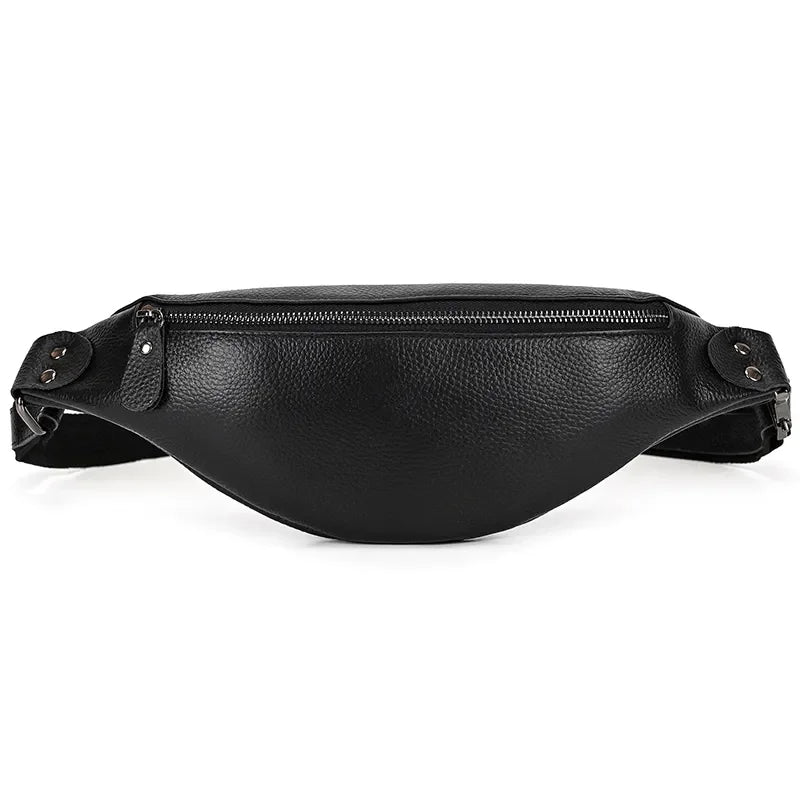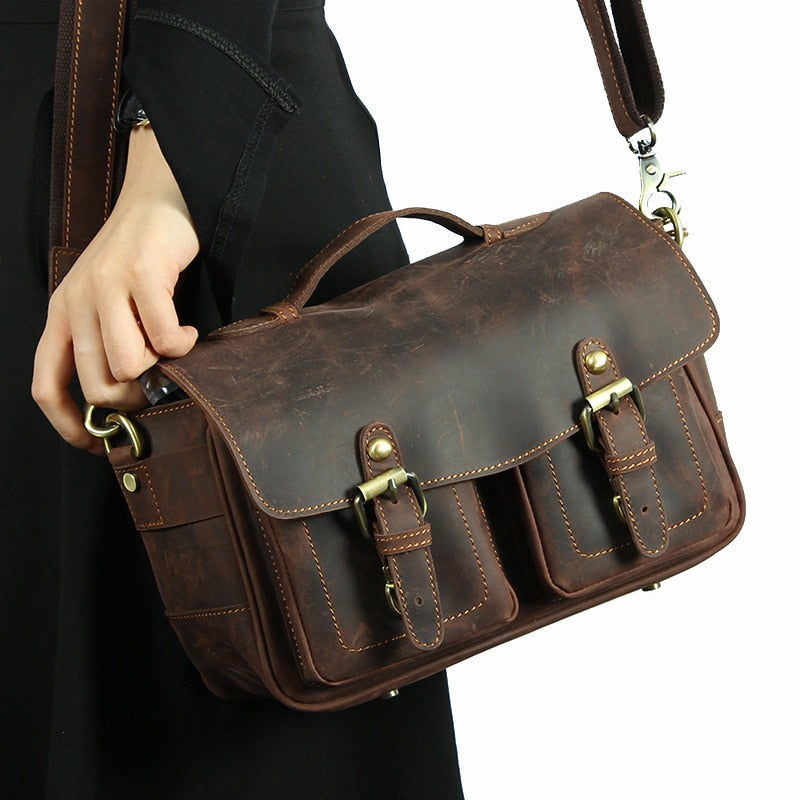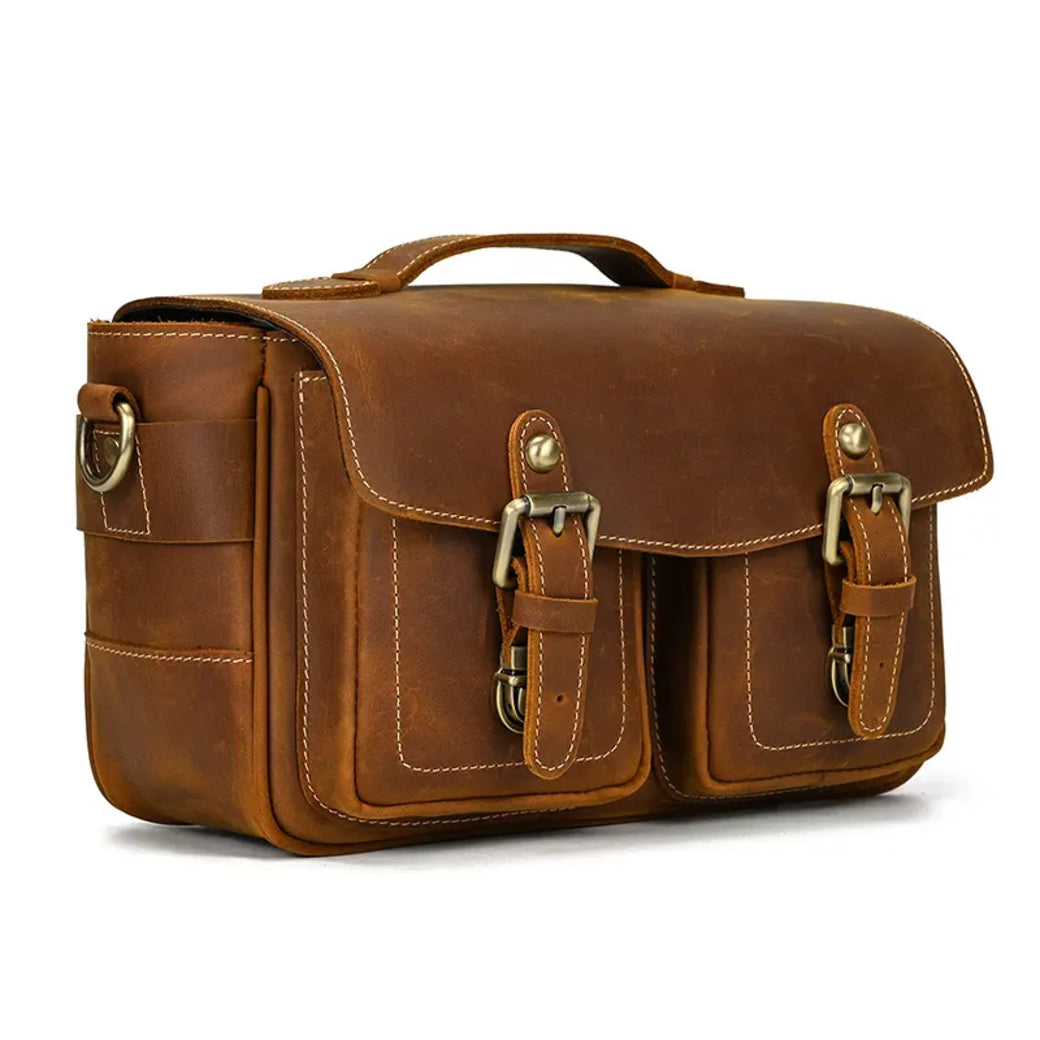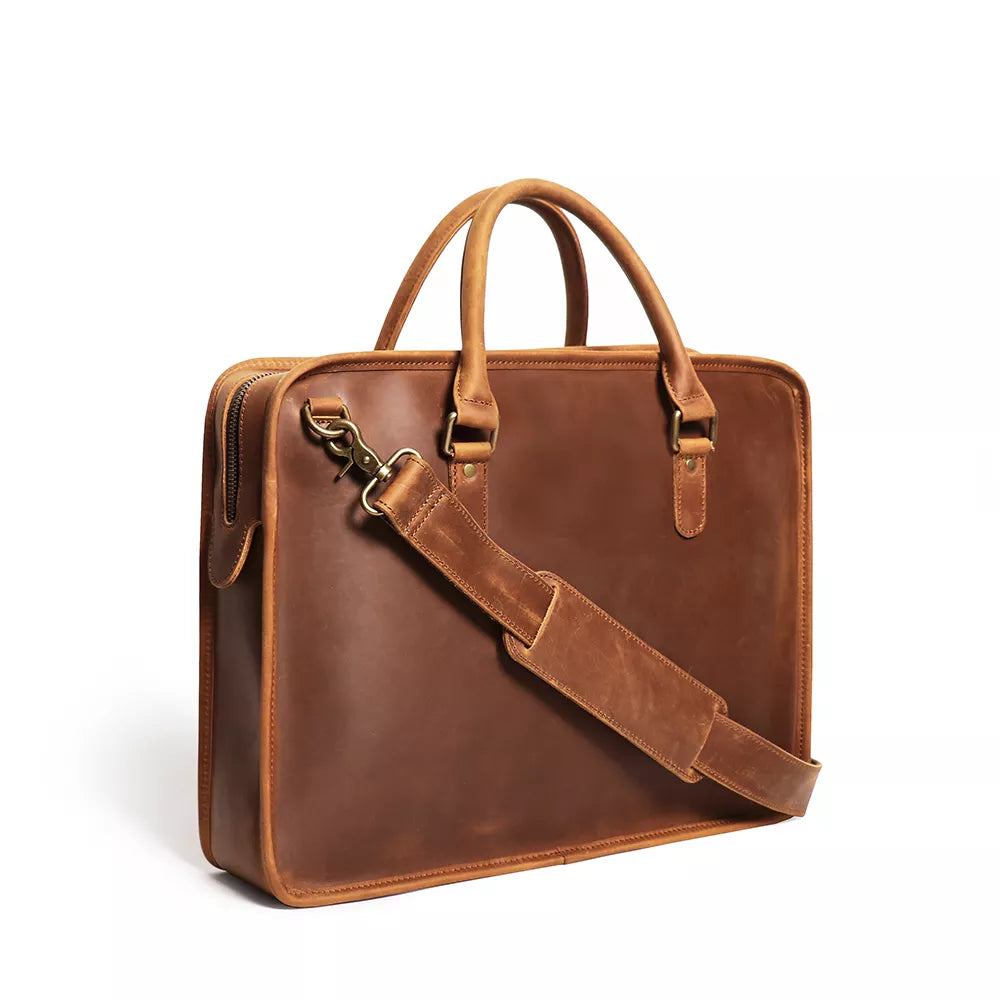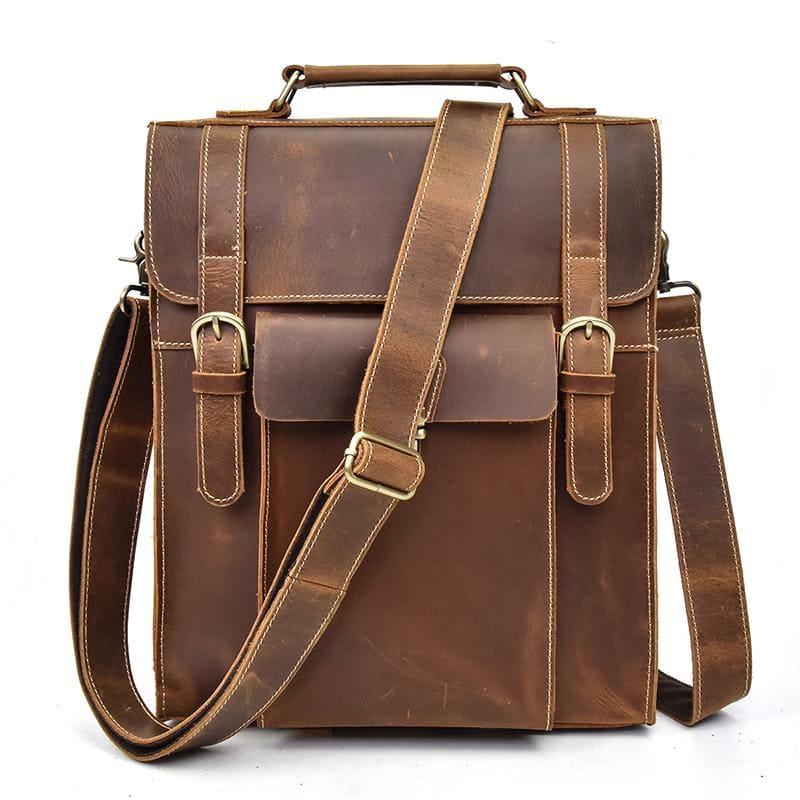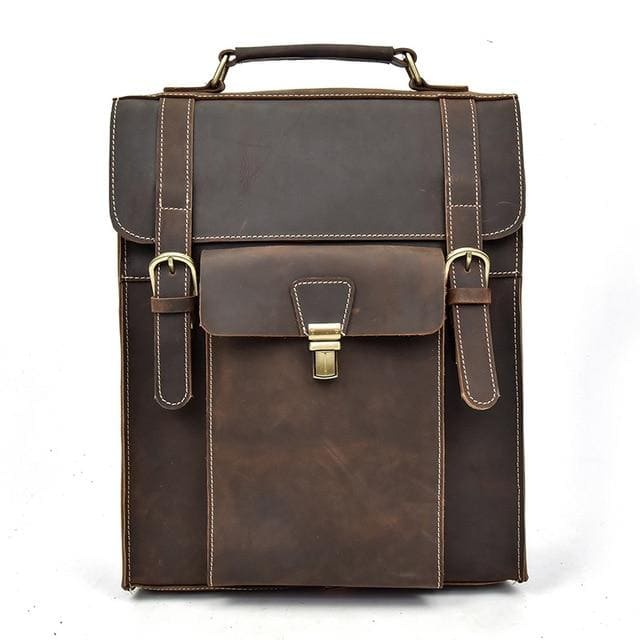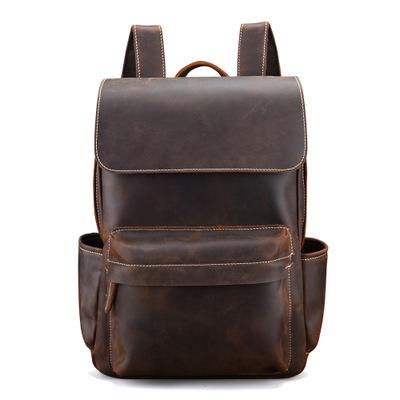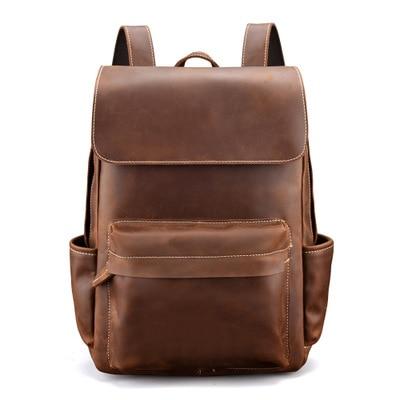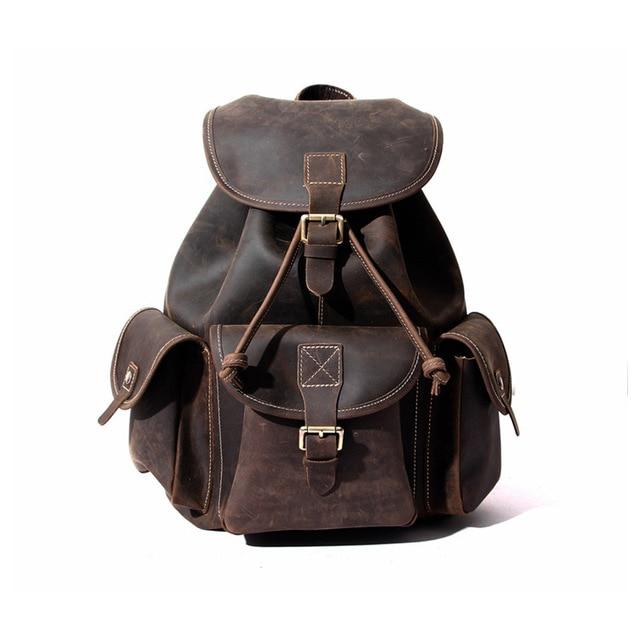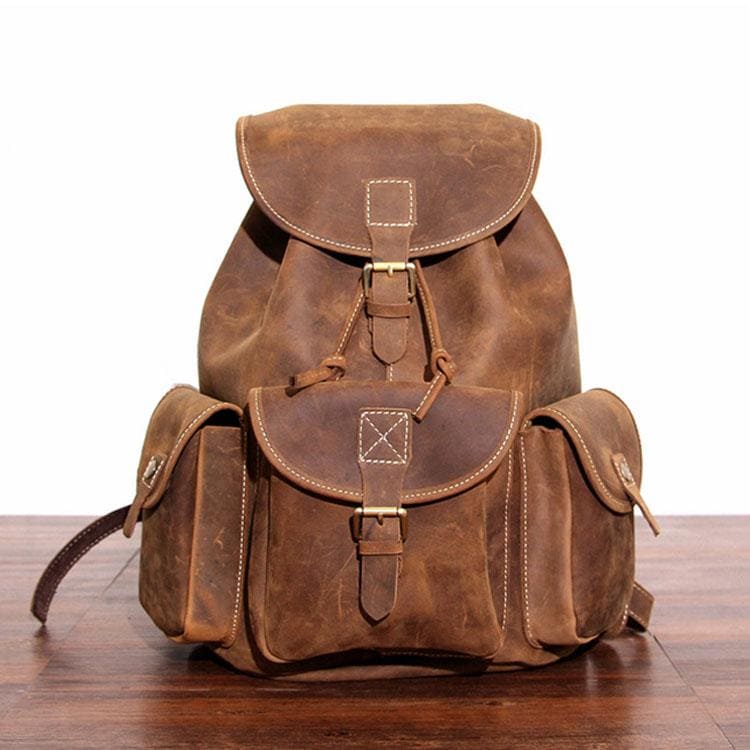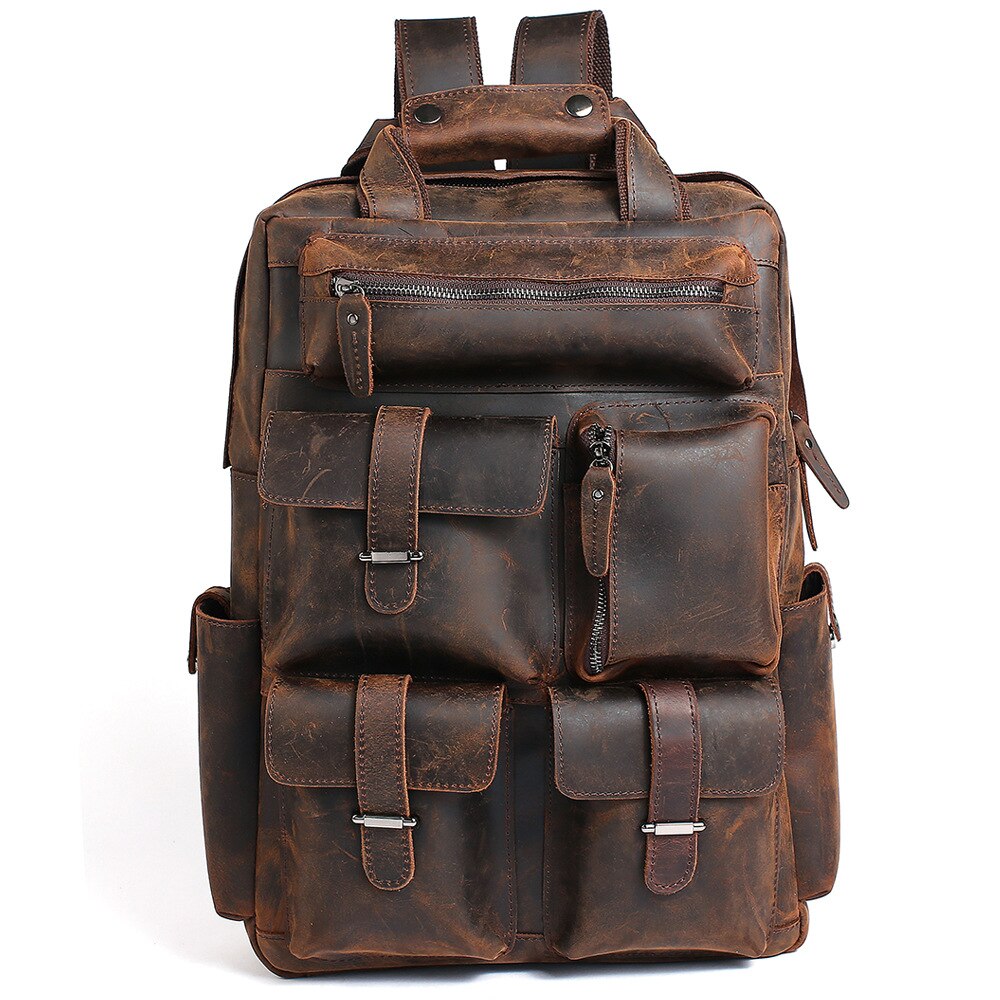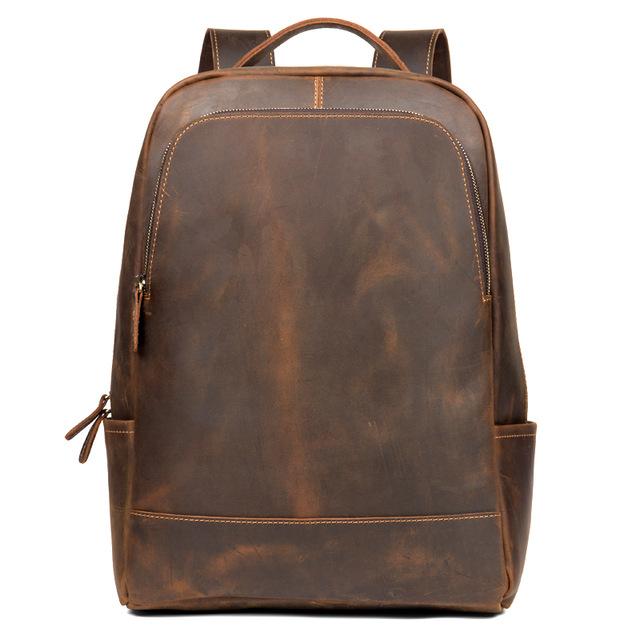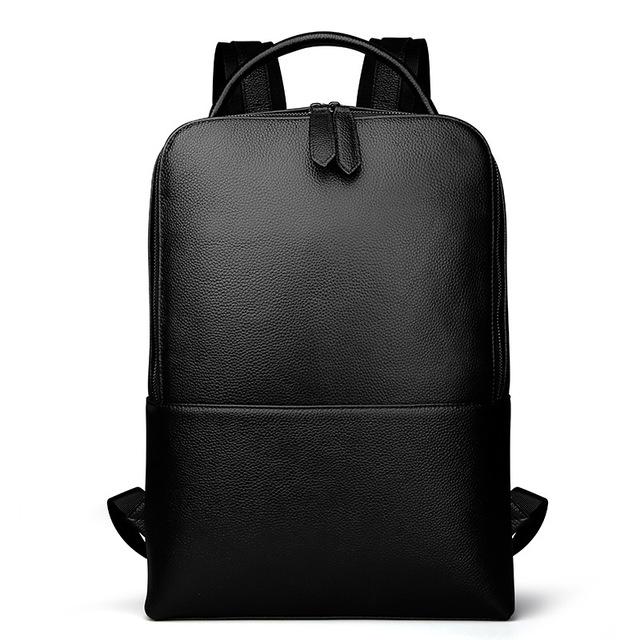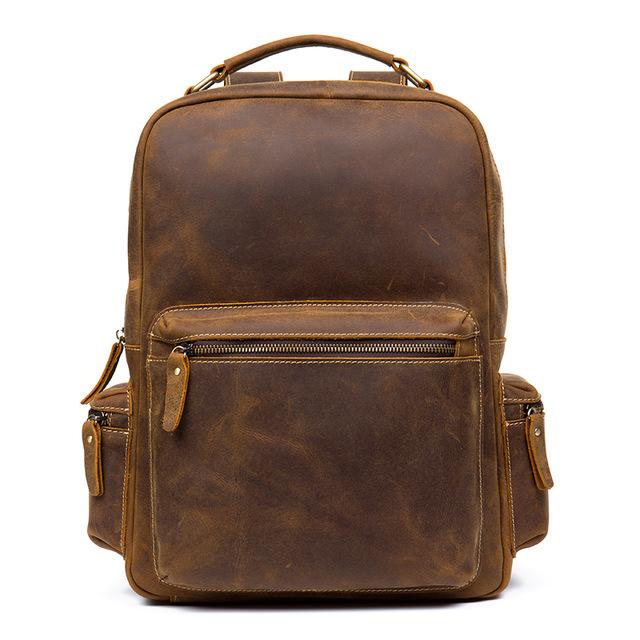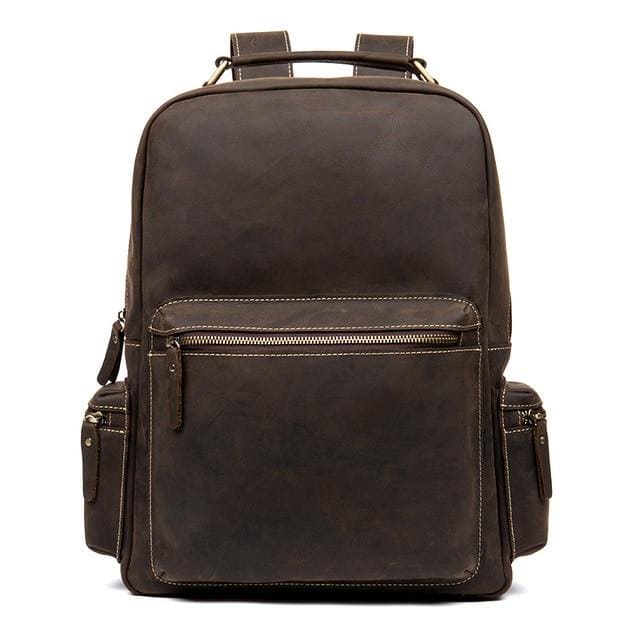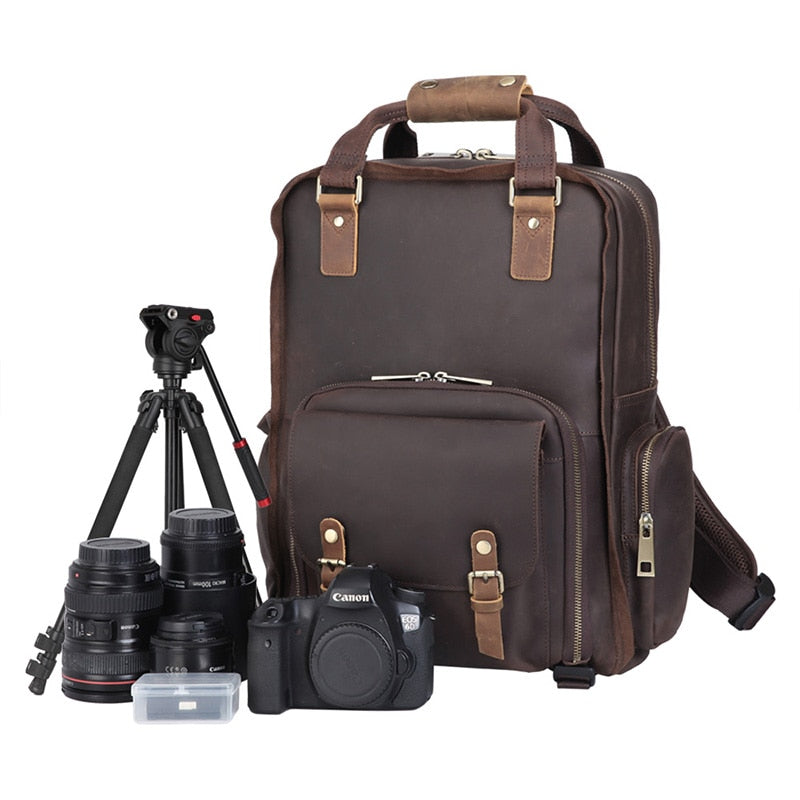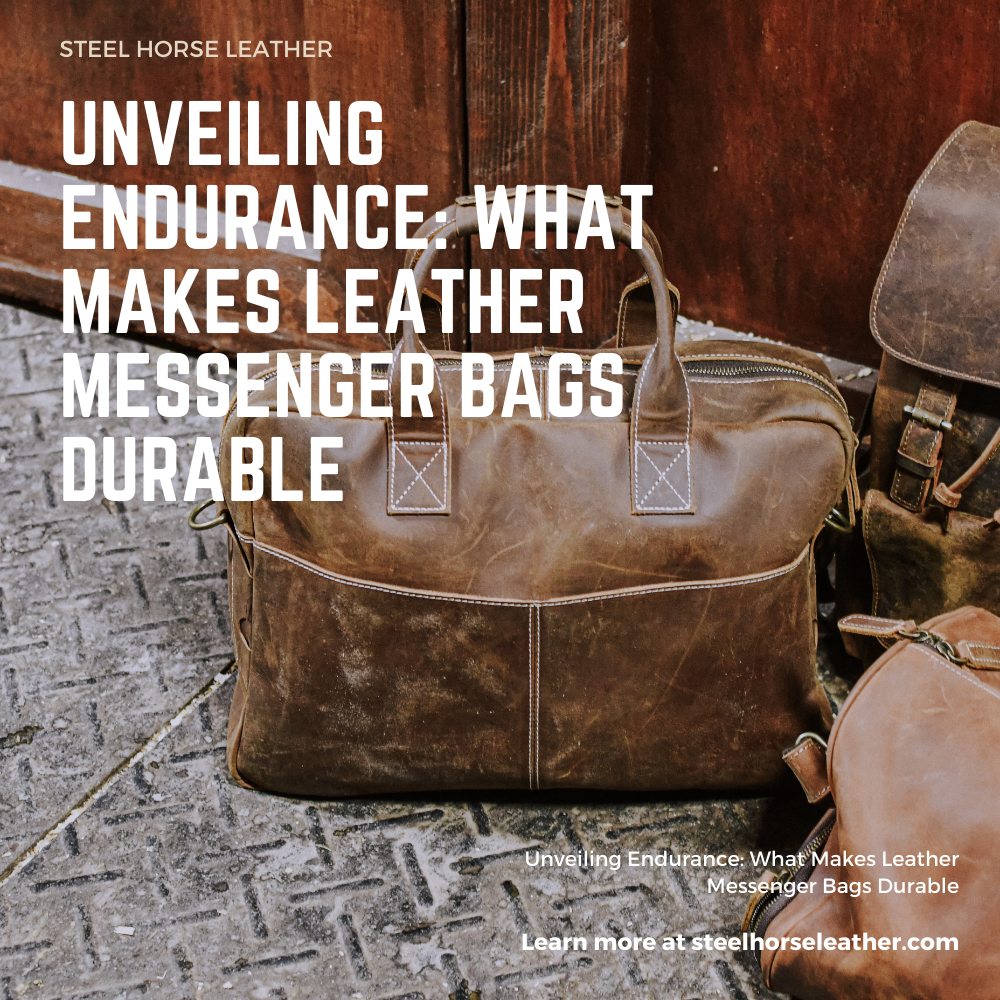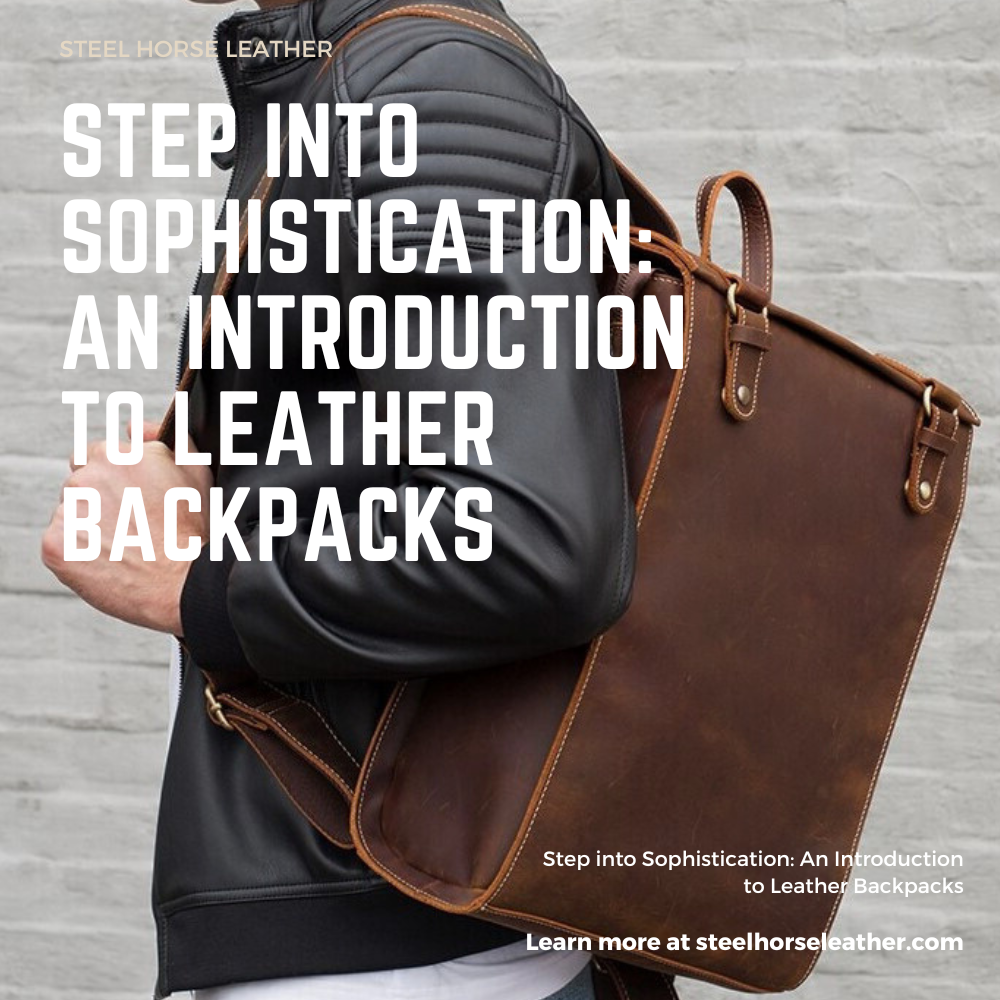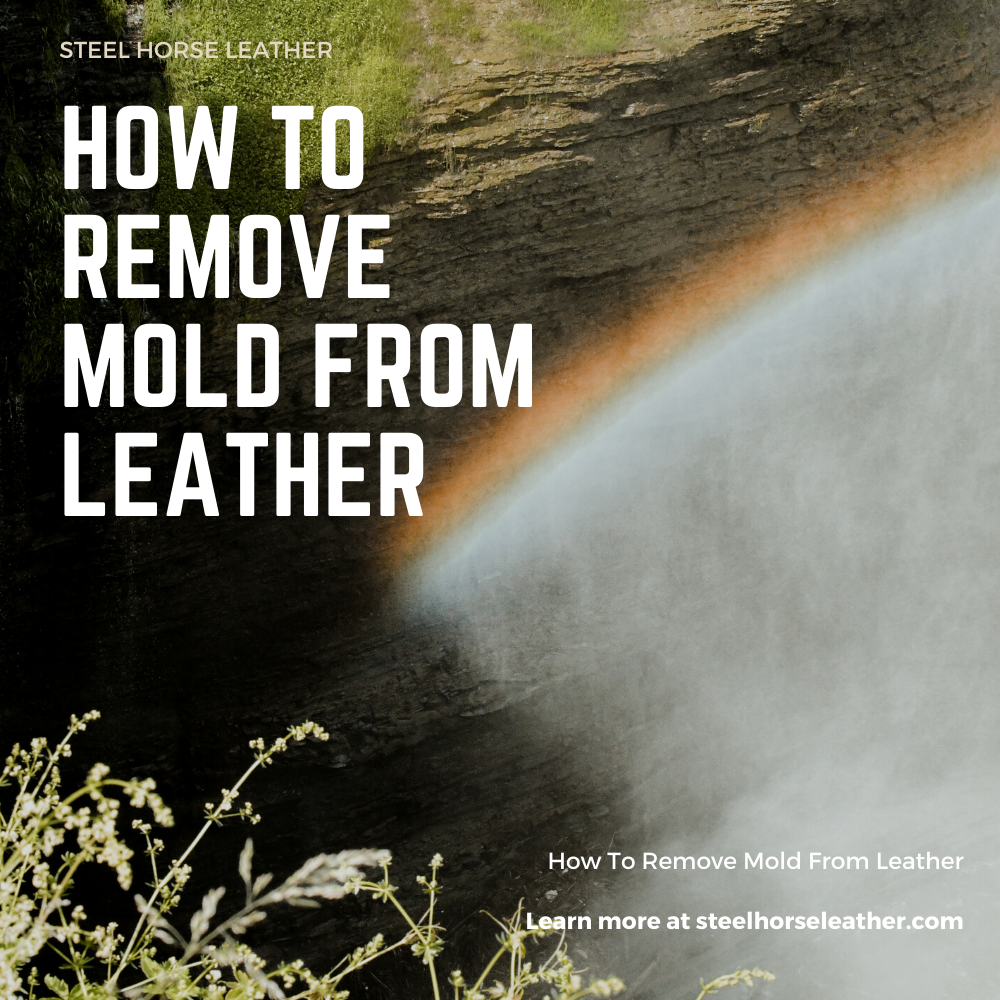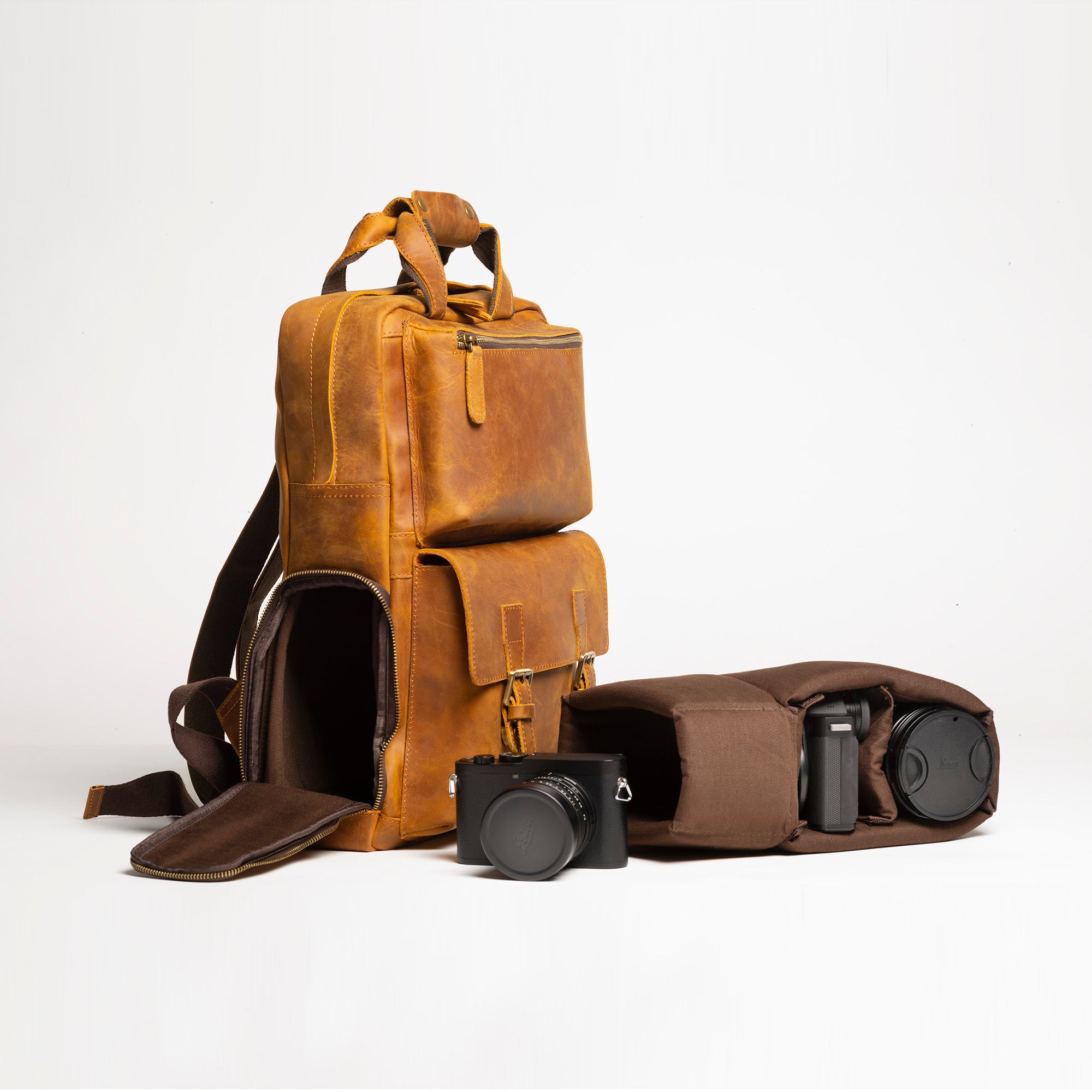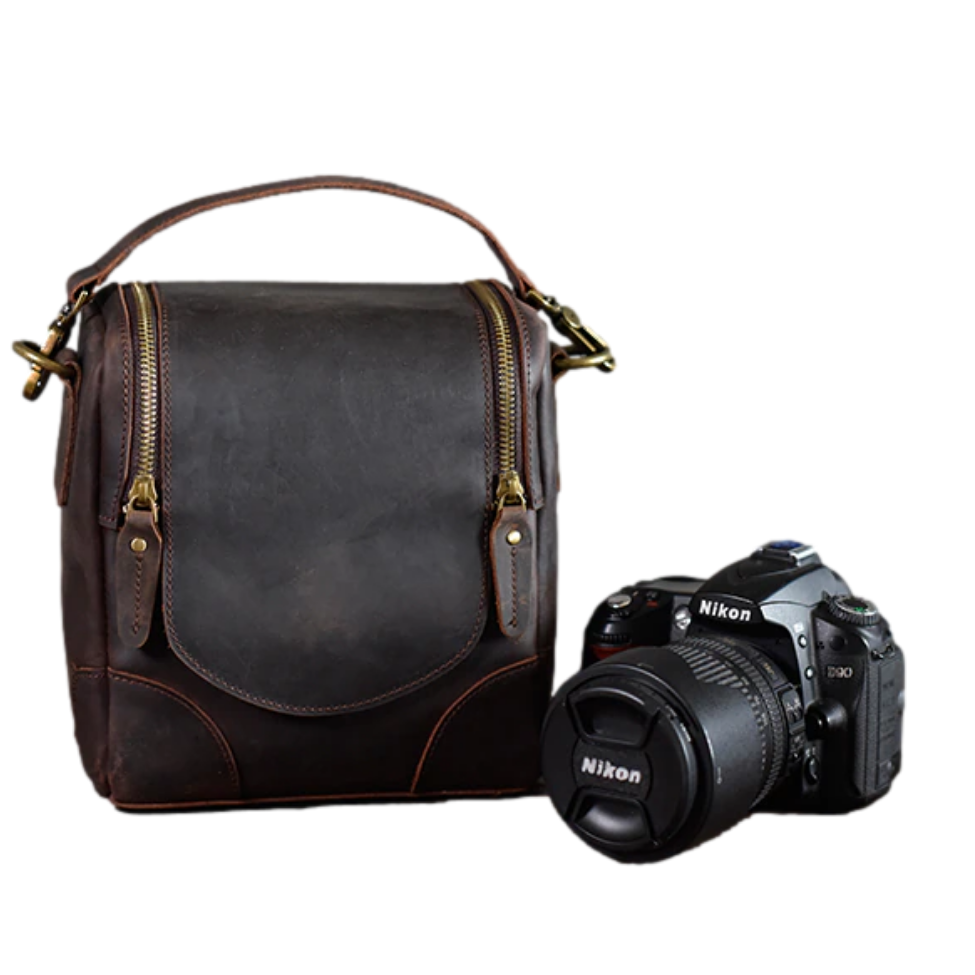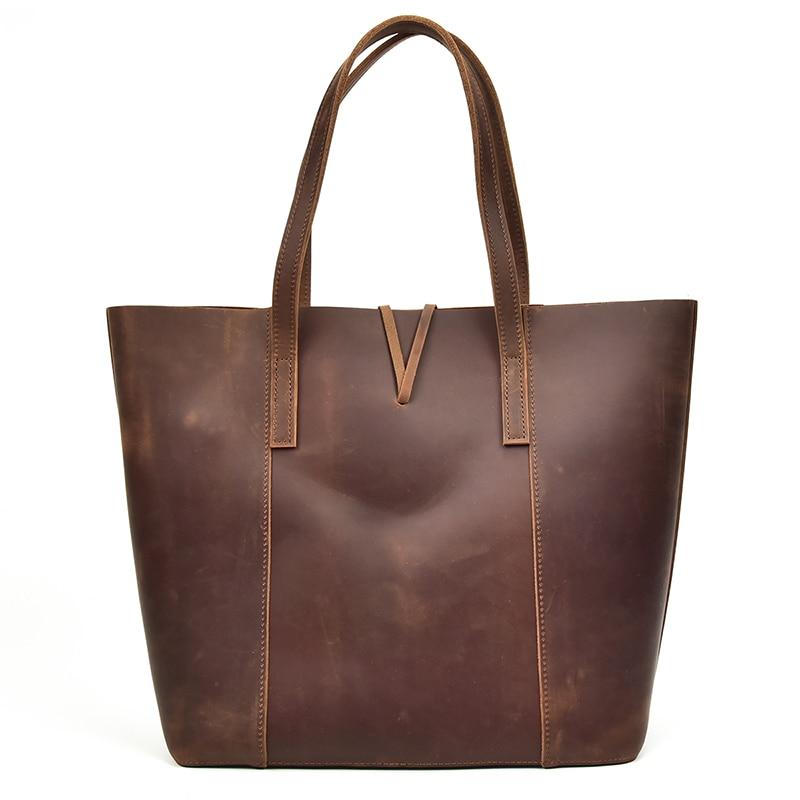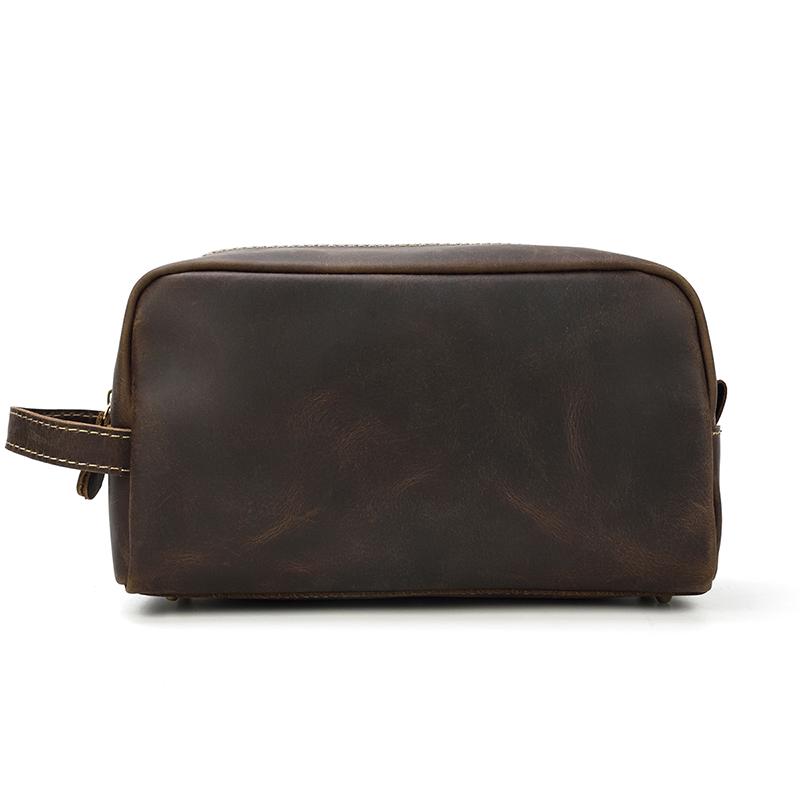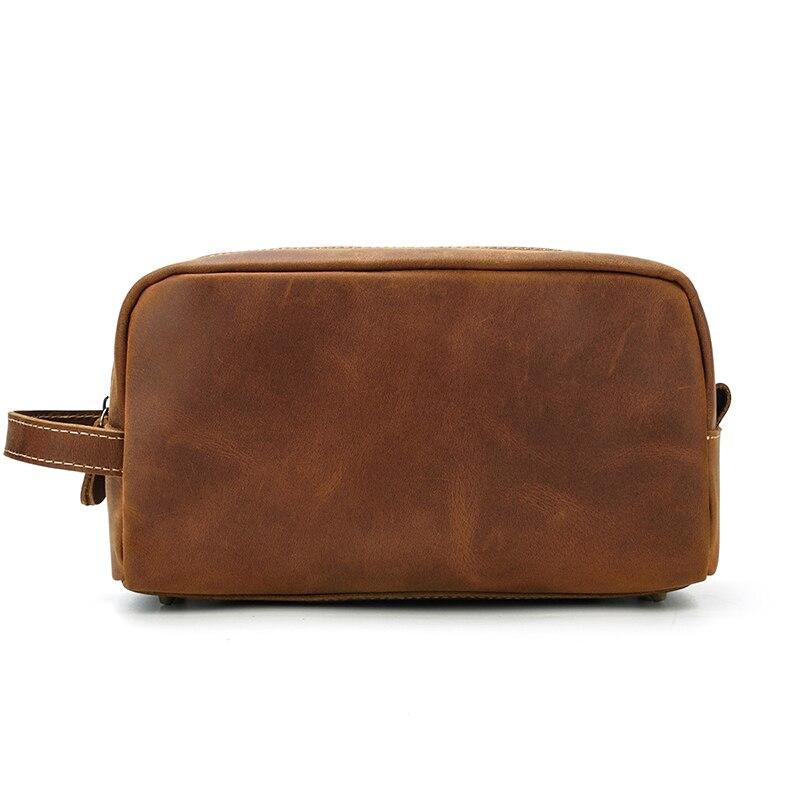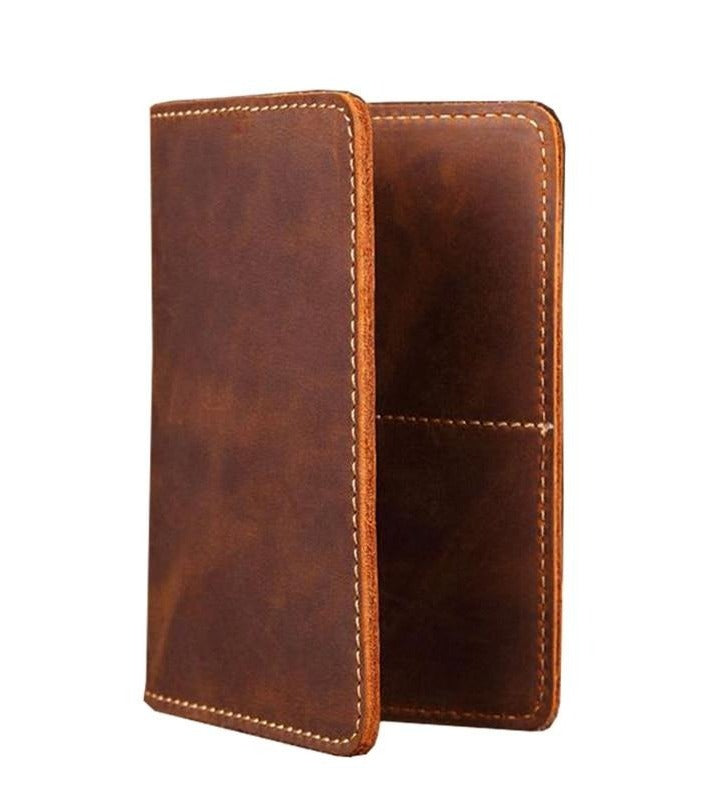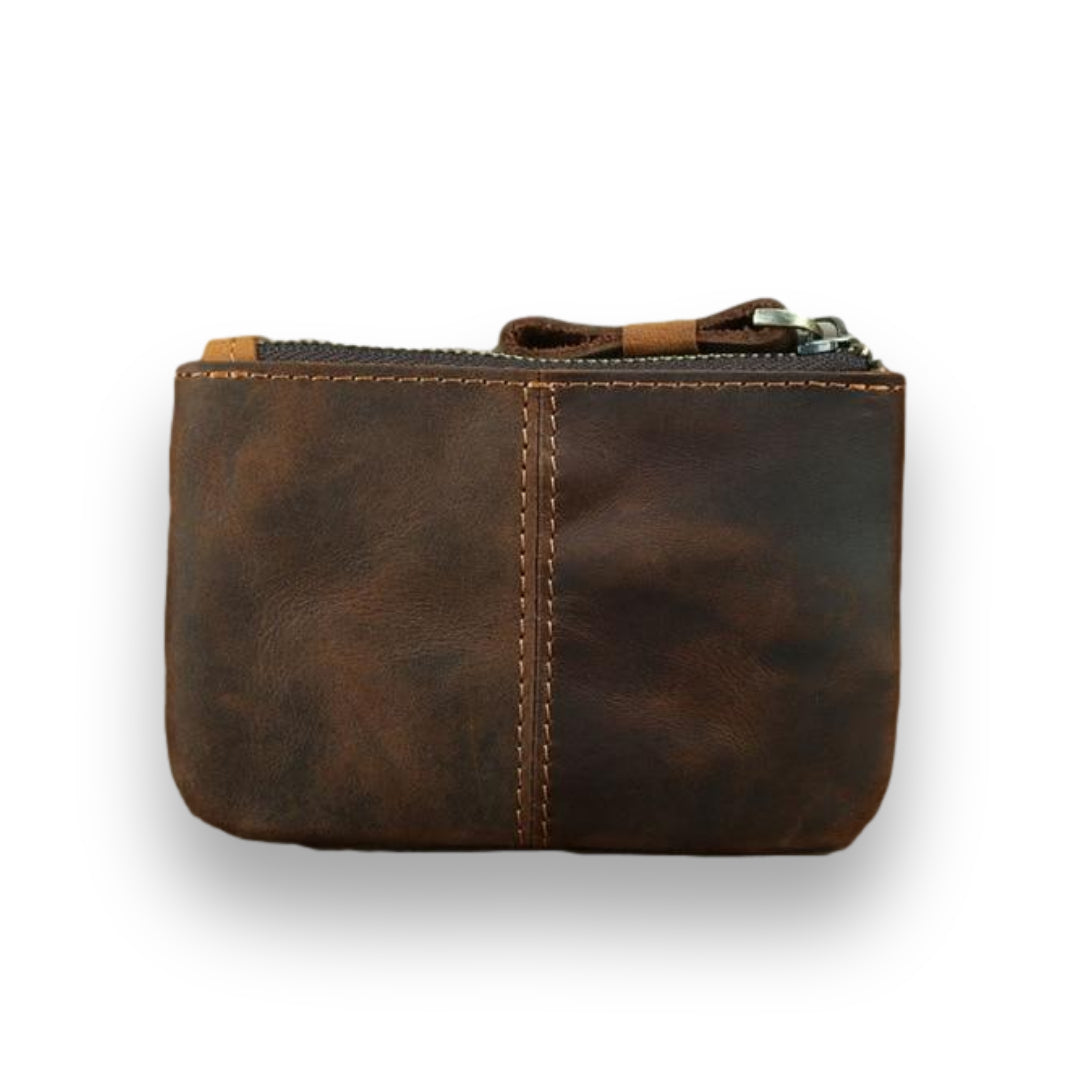Love at first sight. There is no mistaking it. You see a leather bag and you fell in love instantly. Leather is strong and likewise durable. But most importantly, it is beautiful. Like a fine wine, leather ages beautifully. But what makes leather so beautiful? The answer is simple: leather patina.
Key Takeaways
- Only high-quality, genuine leather (particularly full-grain and vegetable-tanned) develops a true patina
- Proper maintenance and conditioning are crucial for developing an attractive patina while preserving leather quality
- Natural factors like sunlight, oils, and regular use contribute to unique patina development
- Faux leather and lower-quality leather products won't develop an authentic patina
- The best approach to patina development is patient, regular use rather than artificial acceleration
The Visual Appeal and Unique Story of Leather Patina
The visual appeal of a patina leather bag is truly remarkable, showcasing a rich tapestry of colors and textures that evolve over time. Each scratch, scuff, and mark tells a unique story, reflecting the journey of the bag and its owner. This natural aging process adds character, transforming the leather from a simple accessory into a personal statement piece that resonates with individuality. The warm tones and deep shades that develop create an aesthetic that is not only beautiful but also deeply personal, as no two patina leather bags will ever look identical.
Embracing the imperfections and variations in color can elevate the style of any outfit, providing an organic charm that synthetic materials simply cannot replicate. Over the years, the patina acts as a visual diary, inviting admiration and intrigue from those who appreciate authentic craftsmanship and the narratives behind each unique mark.
The History and Evolution of Leather Patina
The journey of leather patina dates back centuries, entwined with the intricate heritage of leather craftsmanship. Initially, genuine leather was prized for its durability and resilience, with artisans employing traditional tanning processes that not only preserved the natural materials but also contributed significantly to its character. The development of patina, particularly on full-grain leather and vegetable-tanned leather, emerged as craftsmen discovered how leather ages over time. Various types of leather, from top-grain leather to Italian leather, each develop their own distinctive patina through natural wear and environmental elements.
Crafting a beautiful patina on leather products required an understanding of the material's reaction to factors such as exposure to light, moisture, and daily wear. This natural process of leather patina development adds a layer of uniqueness, turning each piece into a story of its own. The absorption of oils and natural elements creates an attractive patina that serves as a marker of quality, distinguishing high-quality leather goods from faux leather products. Proper care with leather conditioners and a soft cloth helps maintain the leather surface while allowing the patina process to occur naturally. As fashion trends shifted toward sustainable choices, the appreciation for patinaed leather grew, leading modern leather enthusiasts to value the rich histories embedded in their leather items. Today, a well-cared-for leather bag with a stunning patina represents not only a commitment to quality but also a celebration of the timeless elegance between natural leather and life experiences.
The Definition of Patina Leather
By definition, the leather patina is the term that describes the aging of leather. It is a slow change that develops on the surface of the leather. This change is the result of the fabric's continued use and exposure to the outside elements. It is especially visible in the aging of high-quality leather. Thus, some consider such change as a hallmark for high-grade leather such as top-grain and full-grain leather.cond
Likewise, leather patina also makes leather highly desirable not only due to its quality but the aesthetic it brings as well. Most people going for a cool and vintage look often use leather to highlight their style.
Leather naturally ages to give off a subtle, natural patina. The addition of dirt, body oils, sunlight, and wear and tear are absorbed into the leather. Over time, this makes the leather its own old-fashioned charm.
How Does Leather Patina Develop?
Developing a great leather patina takes time and patience. It is not something you see changing every day. It is only through time, use, and exposure will the leather change into a more beautiful fabric. The maintenance and conditioning of leather are equally important factors in this process. Therefore, in achieving that great leather patina proper care is necessary.
The patina that develops as a result of use is the most important part of owning leather goods. Every single thing you do to your wallet or backpack it will add to the character that defines it over time. Casual wear and tear will leave marks on leather that only serve to make it more beautiful. Use your leather items, pick up after yourself, and look after your leather. The result will be a different experience every time you touch it.
What Develops a Patina?
Many things in life develop a patina. Allowing the product to get used and exposed can have a transformative effect on how it looks. Initially, we might not recognize how something has developed the patina that they have, but over time it becomes apparent. Just like with leather, wood develops a patina from chemical reactions that occur as it's exposed to the heat of the sun and moisture of rain. Similarly, metal turns its surface matte after exposure to oxidation.
Ages ago, stone was not considered to be a material that got its patina from interaction with the outside world. Now, rust is as common as city traffic, so it isn't that much of a mystery. What about the Statue of Liberty? Years ago, she was made entirely from copper-alloyed iron and topped with a copper skirt. As such, she was highly reflective and needed a rich oxide patina over time to change her appearance. Whatever is the truth, copper develops an alluring green patina after exposure to the open air. However, this beautiful surface can succumb to the elements just like the buttons on a pair of jeans.
Stone is another example that might not be particularly obvious unless a newer facade is set up against an older stone. The newer stone tends to have a lighter, less weathered appearance due to the lack of exposure to the weather and the sun.
However, while there are several things that can develop a patina, it is important to note that only real, high quality leather can develop a beautiful patina over time. Things like PU Leather or Bonded Leather do not develop patinas.
Benefits and Characteristics of Leather Patina
| Benefit | Why It Happens |
|---|---|
| 🤲 Softer Feel | Fibers break in over time |
| 🎨 Vintage Look | Scratches + oils + sun = rich marbling |
| 🛡️ Protection | Patina forms natural shield |
| ✅ Quality Proof | Only full-grain + veg-tan develops it |
| ✨ Good Patina Signs | |
|---|---|
| Sheen | Soft glow, not dull |
| Color | Deep, marbled, uneven |
| Best Leather | Full-grain + vegetable-tanned |
Tip: Daily use + sunlight = faster patina. Embrace scratches — they’re your bag’s story.
There are several benefits to embracing a leather patina. One benefit is an increased softness in leather. As leather ages and develops a nice patina, it is slowly broken in and will become softer. Another reason is the look. Many people tend to prefer the aged vintage antique leather look that patina leather tends to offer.
Benefit of Patina
Besides turning heads wherever you take your leather bag, a good patina is an age-old way of knowing that your bag was made with high quality leather. That natural patina will also form a protective covering that will protect your bag from excessive weathering or corrosion. Simply put, it looks good and makes your bag last longer.
What are the Characteristics of a Good Patina?
A good patina will have a slight sheen to it, and be rich, almost marbled in character. It is the accumulation of scratches, oils from your hands or other sources, sunlight, wear, etc. But not heavily treated "genuine leather" or other lesser grades of leather.
Full grain leather that has been naturally treated with vegetable tanning (like ours) is the best leather for developing rich patinas over time. It's a sure-fire way of getting that quality vintage antique leather look.
Types of Leather and Patina Development
Different types of Leather Age Differently. Leather ages differently depending on how it was made and what type of leather it is. The most valuable leather is full grain, which refers to leather that has not been sanded, buffed, or snuffed (that is, had the grain removed) from the rawhide.
Full Grain Leather - The Highest Grade of Leather
You've probably heard the term full grain leather before, but do you know exactly what it means? Full grain leather is the highest grade of leather. It is the leather that is left on the hide after the top surface has been sanded and all the other layers of the hide have been removed. Full grain leather offers the highest quality and is the most durable. It is very popular in leatherproducts such as wallets, belts, backpacks, and weekenders. You can identify full grain leather by its distinct, natural look. It is not bleached, colored, or treated in any way to hide imperfections.
Full grain leathers are the highest-quality leather materials. They will produce amazing patina over time, and they're the most durable leathers out there. Research confirms that full-grain leather's superior aging properties stem from its ability to retain the natural grain and imperfections of the hide, allowing it to absorb environmental elements like oils and moisture more effectively than lower-grade alternatives (Xiao et al., 2023; Abbott et al., 2015). This structural integrity is precisely what enables the development of that coveted rich patina that distinguishes premium leather goods from inferior products.
A rich patina is the hallmark of a high quality, full grain leather product. The real heart of any luxury item is the soul of its leather. If you want your products to age well and look beautiful throughout the years, then you should choose a premium material like full grain leather. This means investing time and money in finding skilled leather tannery and master craftsmen.
Vegetable Tanned Leather
Vegetable-tanned leather is tanned using tannins from plant sources, such as tree bark, or from vegetable matter, like the roots and leaves of the sumac or chestnut tree. This refers to the process in which the Full Grain Leather was treated. The vegetable-tanned leather is much more porous and absorbs dye differently than the other forms of leather. The ancient process of vegetable tanning hides requires a lot of time and skill, but this type of leather provides a number of benefits. This natural way of treating leather provides us with a much better and environmentally friendly leather product than chrome tanning.
Chrome tanned leather is a form of leather created using chromium sulfate and other salts in combination with animal flesh. Chrome tanned leather is not a natural process. Originally, chrome tanning is a solution that uses chromium sulfate and other salts in combination with animal skins in order to make a very durable leather that is resistant to water, weather, and rot. While chrome tanning has some benefits, it does not allow the leather to develop a rich patina the way that vegetable tanning does.
Can Faux Leather Develop a Patina?
Faux leather bags can be amazingly realistic, contrasting nicely with other materials, and are often sold at extremely low prices. Unfortunately, it is important to be aware that their construction is not the same as real leather. The faux material is made of synthetic polyester rather than animal hide.
Faux leather products tend to deteriorate easily and look cheap over time, while fake leather bags do not age well and are generally less attractive than their natural leather counterparts.
If you want a really authentic looking patina, choose a leather bag made of 100% real leather. Faux leathers simply won't develop the same beautiful hints of marbling colors as real leather products. Fade might happen, but it won't develop a real patina. Real natural leather is the best choice for developing a patina.
Developing and Managing Leather Patina
Patina is a word that may make your skin crawl, but what is a patina? It's the natural colour of the leather over time. It is truly an art form, the art of aging leather. Like a fine wine, the leather becomes more beautiful with age. The coloring and sheen come from the natural oils and fluids coming from your hands and body.
At our company, we've witnessed this beautiful transformation firsthand with our Hagen Backpack collection. Made from high-quality crazy horse leather, each backpack develops its own unique patina story. During our product development phase, we extensively tested how different usage patterns affected patina development. Our 14.6" x 12.2" x 5.1" backpack, designed for daily use, showcases how natural creases and lines emerge through regular handling, creating an authentic antique appearance that many customers specifically seek.
How to Develop Your Own Patina?
Leather is a natural material with timeless elegance, derived from its natural origins as human skin. Different types of leather, including full-grain leather, top-grain leather, and genuine leather, can be found in many different parts of the world and is used for a variety of purposes. High-quality leather products can include leather bags, simple leather wallets, leather shoes, leather belts, card wallets for credit cards, backpacks, and even watch straps.
Premium leather, especially full-grain vegetable-tanned leather, develops a beautiful patina over time. The leather patina process is a natural process influenced by daily wear, skin oils, and environmental elements. The development of leather patina is actually a desirable characteristic among leather enthusiasts. If you use your high-quality leather goods enough, they will become naturally distressed through exposure to natural elements and eventually develop their own distinctive patina.
Your leather goods were designed to maintain their aesthetic appeal for ages. The patina development on leather is enhanced through proper care and natural wear. Everything you do with your leather bags or wallets will slowly contribute to growing a rich patina. To maintain the natural grain and appearance over time, clean with a soft cloth or microfiber cloth, and avoid excessive exposure to direct sunlight and chemical cleaners. Using high-quality leather conditioners can help protect the uppermost layer while allowing the leather to age gracefully.
Different leather types, such as chrome-tanned leather or vegetable-tanned leather (processed using natural vegetable materials like tree bark), will develop their own unique attractive patina. This natural patina serves as a protective layer and marker of quality, distinguishing real leather from artificial leather or faux leather products. The absorption of oils and natural wear creates darker patches and a stunning patina that adds character to these natural products.
Speeding Up The Leather Patina Process
Not all leather will patina at the same time. even leather from the same animal skin will not have a uniform change. Aside from proper maintenance and conditioning, there are certain factors that may affect the patina process. For example, a leather wallet might develop patina faster than a leather bag or leather jacket. You might be thinking "yes, that is possible because wallets are exposed to constant pressure and friction as it is always kept in the back pocket." This logic is not wrong, however, it is only a fraction of what affects the process. Other factors that will affect the patina include water, natural body oils, moisture, dust, dirt, heat, and sunlight.
The More Exposure The Better
The best and fastest way to develop a beautiful patina on your leather goods is to use them often. This means throwing your wallet in your bag, catching it on the corner of a table, or dragging it along the ground. Some water, such as rain or sprinklers, will not harm the patina - it's the natural oils from your hands that create the beautiful brown coloration that makes up a patina.
There are different levels of exposure and there are different effects on the leather as well. The exposure to different factors will affect the patina outcome. Therefore, "the more exposure, the better" is not always right. It will more or less depend on what kind of patina you are trying to achieve.
For example, frequently exposing your leather to sunlight and heat will likely bring out a golden tone to the fabric. Meanwhile, frequent exposure to rain or seawater will leave splash marks on the leather's surface. Moreover, natural oils such as those secreted by our body will likely cause dark patches to form on the leather. Studies have documented how this complex interplay between environmental conditions and leather characteristics creates varied aging results, with exposure to sunlight, humidity, and daily usage significantly affecting both the coloration and texture of the leather (Cui & Qiang, 2019; Appiah-Brempong et al., 2023). This scientific understanding reinforces why each leather piece develops such a unique appearance that truly reflects its owner's lifestyle and usage patterns.
Frequent exposure to these factors will likely speed up the patina process. However, the best way to speed up the process is just to use your leather frequently. Let time be the only factor influencing the change. The secret to beautiful leather patina is patience. Use it as you normally would and let it age beautifully with all its scrapes and scratches. In fact, according to leather artisans and enthusiasts, each scratch, scruff, wear, and tear makes your leather even more special. This adds to the already unique characteristic of leather made from animal skin. As they say, every leather is unique as no two animal skin is exactly the same.
Slowing Down The Leather Patina Process
For those who want to keep that "new leather" look, you may want to slow down the patina process. Regularly cleaning and condition your leather will help preserve its original look. Especially for leather that is continuously exposed to heat and sunlight. This is necessary because these factors will not only speed up the process but it will also dry out the leather. Therefore, you may want to clean and condition it regularly, like once a month for example.
General Tips on Slowing Down Leather Patina
To slow down the development of patina on your leather bag, it’s essential to adopt a few key practices that protect its natural beauty. First and foremost, always store your bag in a cool, dry place away from direct sunlight, which can accelerate fading and discoloration. It’s advisable to avoid exposure to moisture, as excessive humidity can lead to unwanted water stains and can alter the leather's texture.
When you do clean your patina leather bag, opt for a soft, dry cloth to gently wipe away dust and dirt, steering clear of harsh chemicals that might strip away the leather's natural oils. Additionally, consider applying a specialized leather conditioner sparingly, as this will help maintain its suppleness without overly lubricating the material. Lastly, be mindful of the items you carry; heavy or sharp objects can cause unnecessary wear, thus hastening the aging process. By taking these simple yet effective steps, you can prolong the pristine condition of your patina leather bag while still enjoying its timeless appeal.
Caring for Your Leather

Leather is a material that should be treated with care, but if done correctly, it will become an old friend rather than a one-time object. Wearing leather is not only great for the environment, but it also sets you apart from other consumers and creates a sense of presence. This means - without worrying about wearing out your piece - you can feel confident in its protection and integrity, while still feeling good about how you live your life.
Protecting Leather
Protecting your leather is important because, without it, your leather will crack and deteriorate over time. This process is accelerated by temperature and humidity, so it's important to take care of your leather.
Leather is a durable material that can be kept in prime condition using a few easy steps. The process for maintaining leather might be a little more involved than something that's machine washable, but if you're committed to a leather bag you'll find the time and effort to be worthwhile.
Keep it dry The biggest threat to leather is moisture. Water causes the material to wear down and warp, both of which will lead to cracks and damage over time. If something spills on your bag, remove the item and wipe away the moisture. If it's not practical to do so at the moment, be sure to clean the leather as soon as possible.
Cleaning and Conditioning Leather
The leather must be cleaned from time to time and it must be cleaned the right way. You must only use the proper leather cleaner whenever cleaning leather. Furthermore, cleaning leather must be by handwashing only. Moreover, to properly maintain leather you must invest in great quality leatherconditioners. It will keep the leather clean and strong. It will likewise protect the leather from dirt, grime, and stains.
Cleaning the leather of your leather goods will leave it feeling soft and supple, but like our skin, it also needs moisturizer. If you want to maintain an exceptional appearance for your products, a leather conditioner is for you. Conditioners add moisture and keep the leather surface tender and soft. Research supports that using high-quality leather conditioners is essential for facilitating optimal patina development, as these products nourish the leather and help it respond positively to wear while protecting against premature drying (Omor et al., 2021). This balance between protection and allowing natural aging is key to achieving that attractive patina leather enthusiasts seek.
Having a small but steady supply of leather conditioner can keep leather from drying out. And that's essential for helping it feel like new, or at least like a more-maintained version of its original self.
How to Store Your Leather Bag
Leatherbags are a great accessory and are a must-have for all men and women looking to elevate their style. The right leather bag can instantly transform a drab outfit into something more impressive. To ensure you are enjoying your leather bag for years to come, it is important to take proper care of your bag and maintain it with routine cleaning and conditioning.
A key component to maintaining your leather bag is storing it in the right way. To store your leather bag, you have some options. The first rule in caring for your bag is to never store it in a plastic bag or a plastic box. The best way to store your leather bag is to put it back in the dust jacket it came in. Sometimes, this is not an option. If the bag is too big to be put back into the original bag, then you can use a cotton sheet or pillowcase. Put the bag inside and then put it into a closet. If there is room, you can place a pillow in the closet as well to help keep the bag in place.
Our Journey in Leather Craftsmanship: Three Decades of Expertise

At Steel Horse Leather, our deep understanding of leather patina comes from years of hands-on experience and dedication to traditional leather craftsmanship. Our master artisans have spent decades perfecting their craft, working intimately with various types of leather to understand how each piece develops its unique character over time. This expertise has been particularly valuable in our product development process, where we extensively test and document how different leather types age and develop their distinctive patinas under various conditions.
Through our meticulous leather sourcing process, we've established direct relationships with premium tanneries that share our commitment to quality and ethical practices. This allows us to select only the finest full-grain leathers that we know will develop the most beautiful and lasting patinas. Our holistic approach to leather sourcing and processing means we can trace every hide from its origin through the tanning process, ensuring that each piece meets our exacting standards for patina development. We've witnessed firsthand how different tanning methods affect patina formation, and this knowledge directly influences our product design and care recommendations.
What sets our expertise apart is our obsessive attention to the aging process of leather. Before releasing any new product, we conduct extensive wear testing to understand how the leather will age and develop its unique character. This testing involves subjecting our leather to various environmental conditions and usage patterns, allowing us to provide our customers with accurate guidance on patina development and care. Our commitment to traditional craftsmanship, combined with our deep understanding of leather's aging properties, ensures that every piece we create is designed to develop a rich, beautiful patina that tells its own unique story over time.
Frequently Asked Questions
How Long Does It Take for Leather to Develop a Patina?
The development of patina varies depending on usage and environmental factors. While there's no fixed timeline, you can expect to see initial changes within several months of regular use, with the most beautiful patinas typically developing over years of consistent wear.
Can I Fix or Remove an Unwanted Patina?
While patina is generally permanent and considered desirable, you can slow its development through proper care and maintenance. However, attempting to remove an established patina may damage the leather and is not recommended.
Will My Leather Develop Patina Evenly?
No, leather typically develops patina unevenly, which is part of its charm. Areas that receive more contact with hands, sunlight, or wear will develop patina differently than less exposed areas, creating a unique character.
Should I Protect My New Leather Item from Developing Patina?
While you can slow patina development through careful maintenance, embracing the natural aging process is recommended. Patina is a sign of quality and adds value to genuine leather items over time.t
How Can I Tell if My Leather Will Develop a Good Patina?
Quality indicators include whether the leather is full-grain and vegetable-tanned. These characteristics, combined with proper care and regular use, typically result in the most attractive patina development.
Conclusion
Your leather - an investment piece for the future. Always remember that the hallmark for great, high-quality leather is its patina. Invest in high-quality leather such as top-grain or full-grain leather to have the best-looking patina. Although they are quite expensive, high-quality leather is strong, durable, long-lasting, and beautiful as it ages. They are guaranteed a great investment.
At Steel Horse Leather, we promise to use only premium full-grain leathers to ensure the highest longevity. What's better is that you will end up using these products for a longer time, as they are not only more durable but also keep looking better with each passing year. Not having to replace them frequently also means that you buy less when you buy better quality products.
References
Abbott, A., Alaysuy, O., Antunes, A., Douglas, A., Guthrie-Strachan, J., & Wise, W. (2015). Processing of leather using deep eutectic solvents. ACS Sustainable Chemistry & Engineering, 3(6), 1241-1247. https://doi.org/10.1021/acssuschemeng.5b00226
Appiah-Brempong, M., Essandoh, H., Asiedu, N., Dadzie, S., & Momade, F. (2023). Performance optimization of chemical and green coagulants in tannery wastewater treatment: a response surface methodology approach. Journal of Optimization, 2023, 1-19. https://doi.org/10.1155/2023/9939499
Cui, L., & Qiang, X. (2019). Clean production for chrome free leather by using a novel triazine compound. Journal of Renewable Materials, 7(1), 57-71. https://doi.org/10.32604/jrm.2019.00118
Omor, A., Elkarrach, K., Ouafi, R., Rais, Z., ElMadani, F., & Taleb, M. (2021). Treatment of tannery effluent of unit bovine hides' unhairing liming by the precipitation. https://doi.org/10.5772/intechopen.97657
Xiao, Y., Zhou, J., Wang, C., Zhang, J., Radnaeva, V., & Lin, W. (2023). Sustainable metal-free leather manufacture via synergistic effects of triazine derivative and vegetable tannins. Collagen and Leather, 5(1). https://doi.org/10.1186/s42825-022-00108-0



























